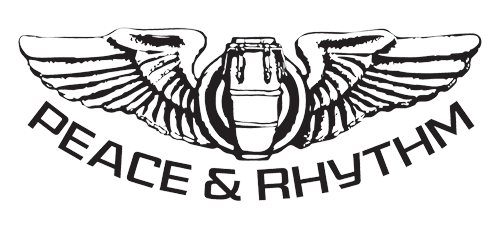News & Updates
Please note: this page is here for archival purposes only and is no longer being updated.
[
{
"id": "covers-live-2017",
"data": {
"title": "Interplanetary Scene Report, End of 2017 edition...Part 2",
"slug": "covers-live-2017",
"date": "2018-01-01T00:00:00.000Z"
},
"filePath": "content/posts/covers-live-2017.md",
"digest": "9d91e766b58576d6",
"rendered": {
"html": "",
"metadata": {
"headings": [],
"localImagePaths": [],
"remoteImagePaths": [],
"frontmatter": {
"web-scraper-order": "1746562188-518",
"web-scraper-start-url": "https://peaceandrhythm.com",
"title": "Interplanetary Scene Report, End of 2017 edition...Part 2",
"pagination": "https://www.peaceandrhythm.com/?page=9",
"date": "January 01, 2018",
"post": "Interplanetary Scene Report, End of 2017 edition...Part 2",
"post-href": "https://www.peaceandrhythm.com/blogs/news/covers-live-2017",
"slug": "covers-live-2017"
},
"imagePaths": []
}
},
"collection": "blog"
},
{
"id": "leon-brothers-45-out-dec-1",
"data": {
"title": "León Brothers 45 Out Friday!! (Record Store Day)",
"slug": "leon-brothers-45-out-dec-1",
"date": "2017-11-20T00:00:00.000Z"
},
"body": "**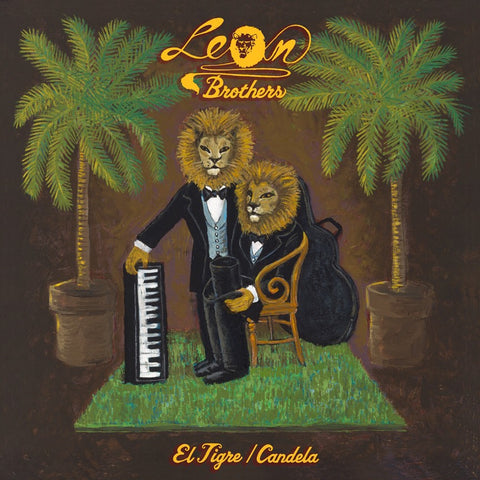**\n\n**León Brothers**\n\n**“El Tigre” / “Candela” 45 RPM**\n\n**Peace & Rhythm**\n\n**P &R45-007 (2017)**\n\nSome say the **León Brothers** are mystical musical entities that came from outer space and landed in the jungles of coastal Colombia 100 years ago, and with the aid of their magic keyboard time machine, have traveled forward in time to warn us of the destructive nature of man and his will to destroy and burn like the tiger and the candle. Other people have a theory that these are human/lion hybrids that escaped from the Island of Dr. Moreau, floating to New York on their inflatable _tambor alegre_ raft. There are reports of lion-headed figures roaming the four boroughs of Gotham at night playing strange **dubbed out mash-ups of ancient future Colombian electronica** , making the locals dance in the dark to **savage feline _cumbia_ and _fandango de lengua_ rhythms** before slipping back into the hazy dawn. Whatever the case, suffice it to say **this new 45 from Peace & Rhythm** unleashes a whole new chapter in **#immigrantbeat** music with strange sounds anchored by Afro-Colombian roots spiked with trippy electro-sonidero punk-reggae flava. Thankfully two tracks were captured at legendary **Casa Del Indio** studios before the brothers slinked back to their lion’s den.\n\nAlgunos dicen que los **León Brothers** son entidades musicales místicas que vinieron del espacio exterior y aterrizaron en las selvas de la costa colombiana hace 100 años, y con la ayuda de su máquina mágica del teclado, viajaron a tiempo para advertirnos del carácter destructivo de el hombre y su voluntad de destruir y quemar como el tigre y la candela. Otras personas tienen una teoría de que estos son híbridos humanos / leones que escaparon de la Isla del Doctor Moreau, flotando a Nueva York en su balsa inflable de tambor alegre. Hay informes de figuras con cabeza de león vagando por los cuatro distritos de Gotham por la noche tocando sus **mash-ups extraños cargados de eco “dub” en estilo futuro-antiguo de electrónica** colombiana, haciendo bailar a los lugareños en la oscuridad a sus **ritmos felines y salvajes de cumbia y fandango de lengua** antes de deslizarse de regreso al brumoso amanecer. Cualquiera que sea el caso, basta con decir que **este nuevo 45 de Peace & Rhythm** da rienda suelta a un capítulo completamente nuevo en la música **#immigrantbeat** con extraños sonidos anclados en raíces afrocolombianas con sonido bien psicodélico de sabor electro-sonidero y punk-reggae. Afortunadamente, dos pistas fueron capturadas en los legendarios estudios **Casa Del Indio** antes de que los hermanos regresaran a su guarida de leones.\n\nCover art by **Margot Glass**.\n\n**Out December 1, 2017.**",
"filePath": "content/posts/leon-brothers-45-out-dec-1.md",
"digest": "d4d583cb371d2c08",
"rendered": {
"html": "<p><strong><img src=\"/images/GetFileAttachment-12_large.jpg\" alt=\"\"></strong></p>\n<p><strong>León Brothers</strong></p>\n<p><strong>“El Tigre” / “Candela” 45 RPM</strong></p>\n<p><strong>Peace & Rhythm</strong></p>\n<p><strong>P &R45-007 (2017)</strong></p>\n<p>Some say the <strong>León Brothers</strong> are mystical musical entities that came from outer space and landed in the jungles of coastal Colombia 100 years ago, and with the aid of their magic keyboard time machine, have traveled forward in time to warn us of the destructive nature of man and his will to destroy and burn like the tiger and the candle. Other people have a theory that these are human/lion hybrids that escaped from the Island of Dr. Moreau, floating to New York on their inflatable <em>tambor alegre</em> raft. There are reports of lion-headed figures roaming the four boroughs of Gotham at night playing strange <strong>dubbed out mash-ups of ancient future Colombian electronica</strong> , making the locals dance in the dark to <strong>savage feline <em>cumbia</em> and <em>fandango de lengua</em> rhythms</strong> before slipping back into the hazy dawn. Whatever the case, suffice it to say <strong>this new 45 from Peace & Rhythm</strong> unleashes a whole new chapter in <strong>#immigrantbeat</strong> music with strange sounds anchored by Afro-Colombian roots spiked with trippy electro-sonidero punk-reggae flava. Thankfully two tracks were captured at legendary <strong>Casa Del Indio</strong> studios before the brothers slinked back to their lion’s den.</p>\n<p>Algunos dicen que los <strong>León Brothers</strong> son entidades musicales místicas que vinieron del espacio exterior y aterrizaron en las selvas de la costa colombiana hace 100 años, y con la ayuda de su máquina mágica del teclado, viajaron a tiempo para advertirnos del carácter destructivo de el hombre y su voluntad de destruir y quemar como el tigre y la candela. Otras personas tienen una teoría de que estos son híbridos humanos / leones que escaparon de la Isla del Doctor Moreau, flotando a Nueva York en su balsa inflable de tambor alegre. Hay informes de figuras con cabeza de león vagando por los cuatro distritos de Gotham por la noche tocando sus <strong>mash-ups extraños cargados de eco “dub” en estilo futuro-antiguo de electrónica</strong> colombiana, haciendo bailar a los lugareños en la oscuridad a sus <strong>ritmos felines y salvajes de cumbia y fandango de lengua</strong> antes de deslizarse de regreso al brumoso amanecer. Cualquiera que sea el caso, basta con decir que <strong>este nuevo 45 de Peace & Rhythm</strong> da rienda suelta a un capítulo completamente nuevo en la música <strong>#immigrantbeat</strong> con extraños sonidos anclados en raíces afrocolombianas con sonido bien psicodélico de sabor electro-sonidero y punk-reggae. Afortunadamente, dos pistas fueron capturadas en los legendarios estudios <strong>Casa Del Indio</strong> antes de que los hermanos regresaran a su guarida de leones.</p>\n<p>Cover art by <strong>Margot Glass</strong>.</p>\n<p><strong>Out December 1, 2017.</strong></p>",
"metadata": {
"headings": [],
"localImagePaths": [],
"remoteImagePaths": [],
"frontmatter": {
"web-scraper-order": "1746562176-517",
"web-scraper-start-url": "https://peaceandrhythm.com",
"title": "León Brothers 45 Out Friday!! (Record Store Day)",
"pagination": "https://www.peaceandrhythm.com/?page=9",
"date": "November 20, 2017",
"post": "León Brothers 45 Out Friday!! (Record Store Day)",
"post-href": "https://www.peaceandrhythm.com/blogs/news/leon-brothers-45-out-dec-1",
"slug": "leon-brothers-45-out-dec-1"
},
"imagePaths": []
}
},
"collection": "blog"
},
{
"id": "pete-cosey-oct-9-1943-may-30-2012",
"data": {
"title": "Pete Cosey / Oct 9, 1943 - May 30, 2012",
"slug": "pete-cosey-oct-9-1943-may-30-2012",
"date": "2017-10-09T00:00:00.000Z"
},
"body": "**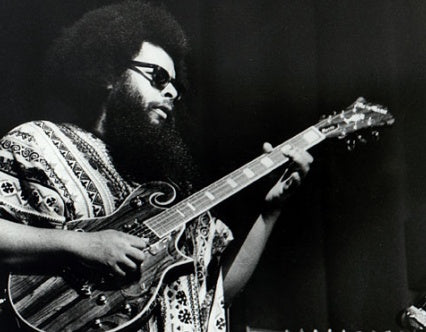**\n\n**Pete Cosey** is a Chicago guitar legend, a heavy man with a heavy sound. He is best known for his mid-'70s work for Miles Davis. Despite having never recorded as a leader, he has gotten on many sessions and had a notable career as a Hendrix-esque sonic poet.\n\nHe was born into a jazz family in Chicago, his father played sax with Sidney Bechet, Louis Jordan, Eddie \"Cleanhead\" Vinson, Big Bill Broonzy and Josephine Baker, and his mother was a composer. He spent his teenage years in Tucson but came back to Chicago for some session work at Chess. He played on \"Rescue Me\" (Fontella Bass) and with Etta James, Little Milton, Rotary Connection, John Klemmer, Howlin' Wolf and on _Electric Mud_ , the psych-blues classic by Muddy Waters. He also played on Motown tunes by the Marvelettes and Four Tops. He toured with Aretha Franklin, Sonny Stitt and Gene Ammons.\n\nHe played in the legendary Chicago funk band The Pharoahs, with Phil Cohran's Artistic Heritage Ensemble and was a member of the AACM. He played on Melvin Jackson's _Funky Skull_. He played on several Miles classics in the '70s: _Get Up With It_ , _Agharta_ , _Pangaea_ and _Dark Magus_ , as well as the _On The Corner_ sessions.\n\nHe played on Mtume's _Rebirth Cycle_ in '74. He appeared on Herbie Hancock's _Future Shock_ album in '82, and in '87 played in Power Tools with Melvin Gibbs and Ronald Shannon Jackson but little else until 2000 when he hooked up with Akira Sakata/Bill Laswell/Hamid Drake.\n\nIn 2001 he joined Children of Agharta, which was an ensemble with Gibbs, John Stubblefield, Gary Bartz and others but that ended up on _The People's Court_! (Cosey defeated a money-stealing promoter). In 2003 he played with Burnt Sugar and was part of a revival of the _Electric Mud_ players for Martin Scorsese's _The Blues_ series. His last project seems to have been on _Miles To India_ in 2007. From his gnarly electric style on guitar & sitar to his dashiki & shades on-the-floor position onstage, Cosey was a large presence.",
"filePath": "content/posts/pete-cosey-oct-9-1943-may-30-2012.md",
"digest": "34b29a39d78fc743",
"rendered": {
"html": "<p><strong><img src=\"/images/cosey_large.jpg\" alt=\"\"></strong></p>\n<p><strong>Pete Cosey</strong> is a Chicago guitar legend, a heavy man with a heavy sound. He is best known for his mid-’70s work for Miles Davis. Despite having never recorded as a leader, he has gotten on many sessions and had a notable career as a Hendrix-esque sonic poet.</p>\n<p>He was born into a jazz family in Chicago, his father played sax with Sidney Bechet, Louis Jordan, Eddie “Cleanhead” Vinson, Big Bill Broonzy and Josephine Baker, and his mother was a composer. He spent his teenage years in Tucson but came back to Chicago for some session work at Chess. He played on “Rescue Me” (Fontella Bass) and with Etta James, Little Milton, Rotary Connection, John Klemmer, Howlin’ Wolf and on <em>Electric Mud</em> , the psych-blues classic by Muddy Waters. He also played on Motown tunes by the Marvelettes and Four Tops. He toured with Aretha Franklin, Sonny Stitt and Gene Ammons.</p>\n<p>He played in the legendary Chicago funk band The Pharoahs, with Phil Cohran’s Artistic Heritage Ensemble and was a member of the AACM. He played on Melvin Jackson’s <em>Funky Skull</em>. He played on several Miles classics in the ’70s: <em>Get Up With It</em> , <em>Agharta</em> , <em>Pangaea</em> and <em>Dark Magus</em> , as well as the <em>On The Corner</em> sessions.</p>\n<p>He played on Mtume’s <em>Rebirth Cycle</em> in ‘74. He appeared on Herbie Hancock’s <em>Future Shock</em> album in ‘82, and in ‘87 played in Power Tools with Melvin Gibbs and Ronald Shannon Jackson but little else until 2000 when he hooked up with Akira Sakata/Bill Laswell/Hamid Drake.</p>\n<p>In 2001 he joined Children of Agharta, which was an ensemble with Gibbs, John Stubblefield, Gary Bartz and others but that ended up on <em>The People’s Court</em>! (Cosey defeated a money-stealing promoter). In 2003 he played with Burnt Sugar and was part of a revival of the <em>Electric Mud</em> players for Martin Scorsese’s <em>The Blues</em> series. His last project seems to have been on <em>Miles To India</em> in 2007. From his gnarly electric style on guitar & sitar to his dashiki & shades on-the-floor position onstage, Cosey was a large presence.</p>",
"metadata": {
"headings": [],
"localImagePaths": [],
"remoteImagePaths": [],
"frontmatter": {
"web-scraper-order": "1746562174-516",
"web-scraper-start-url": "https://peaceandrhythm.com",
"title": "Pete Cosey / Oct 9, 1943 - May 30, 2012",
"pagination": "https://www.peaceandrhythm.com/?page=9",
"date": "October 09, 2017",
"post": "Pete Cosey / Oct 9, 1943 - May 30, 2012",
"post-href": "https://www.peaceandrhythm.com/blogs/news/pete-cosey-oct-9-1943-may-30-2012",
"slug": "pete-cosey-oct-9-1943-may-30-2012"
},
"imagePaths": []
}
},
"collection": "blog"
},
{
"id": "yusef-lateef-oct-9-1920-dec-23-2013",
"data": {
"title": "Yusef Lateef / Oct 9, 1920 - Dec 23, 2013",
"slug": "yusef-lateef-oct-9-1920-dec-23-2013",
"date": "2017-10-09T00:00:00.000Z"
},
"body": "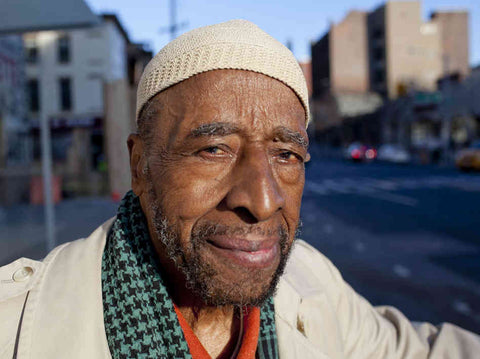\n\nOne of the (gentle) giants of American music, the career Brothe **Yusef Lateef** stretches way back to the '40s and he has played with many greats and inspired many others. The man played tenor sax, flute, oboe, basson, shenai, koto and many other obscure or Eastern instruments, as well as electronics. He was an early fusionist of \"world music\" and jazz. His base was very bluesy, and his music also touched on funk, new age, film music, gospel, avant-garde, bop, electro-acoustic, European classical and various Eastern and African forms.\n\nHe was born in Chattanooga but grew up as William Evans in Detroit. In his early career he played locally with Paul Chambers and Elvin Jones and played in the swing orchestras of Lucky Millinder, Hot Lips Page and Roy Eldridge. He toured with Dizzy Gillespie in '49 and converted to Islam in '50.\n\nIn '57 he started recording for Savoy and soon had albums on New Jazz, Argo and Riverside as well. In the early '60s he delved into the world music stream, incorporating all kinds of exotic instruments and influences. Around this time he took part in both Art Blakey's African experiments and Olatunji's work.\n\nWith John Coltrane as a huge admirer, Lateef signed to Impulse! in the mid-'60s and with Atlantic after that. Starting in the '70s he worked as an educator, mostly in NYC, Western Massachusetts and Nigeria. He won a Grammy in '87 and in later years had amazing collaborations with percussionist Adam Rudolph.\n\nHe has played as a sideman or co-leader with Cannonball Adderley, Art Farmer, Charles Mingus, Archie Shepp, Von Freeman, Roscoe Mitchell, Les McCann, Grant Green, Donald Byrd, Randy Weston and many more. He was also a writer of short stories and novellas, as well as his autobiography _The Gentle Giant_. He owned his own publishing company and operated the YAL label. He was also my parents' neighbor in Western Mass before his death. His reedswork, visionary fusion of jazz and world music and his work in the Muslim community are inspirational.",
"filePath": "content/posts/yusef-lateef-oct-9-1920-dec-23-2013.md",
"digest": "e286a257412d260d",
"rendered": {
"html": "<p><img src=\"/images/Yusef-Lateef_large.jpg\" alt=\"\"></p>\n<p>One of the (gentle) giants of American music, the career Brothe <strong>Yusef Lateef</strong> stretches way back to the ’40s and he has played with many greats and inspired many others. The man played tenor sax, flute, oboe, basson, shenai, koto and many other obscure or Eastern instruments, as well as electronics. He was an early fusionist of “world music” and jazz. His base was very bluesy, and his music also touched on funk, new age, film music, gospel, avant-garde, bop, electro-acoustic, European classical and various Eastern and African forms.</p>\n<p>He was born in Chattanooga but grew up as William Evans in Detroit. In his early career he played locally with Paul Chambers and Elvin Jones and played in the swing orchestras of Lucky Millinder, Hot Lips Page and Roy Eldridge. He toured with Dizzy Gillespie in ‘49 and converted to Islam in ‘50.</p>\n<p>In ‘57 he started recording for Savoy and soon had albums on New Jazz, Argo and Riverside as well. In the early ’60s he delved into the world music stream, incorporating all kinds of exotic instruments and influences. Around this time he took part in both Art Blakey’s African experiments and Olatunji’s work.</p>\n<p>With John Coltrane as a huge admirer, Lateef signed to Impulse! in the mid-’60s and with Atlantic after that. Starting in the ’70s he worked as an educator, mostly in NYC, Western Massachusetts and Nigeria. He won a Grammy in ‘87 and in later years had amazing collaborations with percussionist Adam Rudolph.</p>\n<p>He has played as a sideman or co-leader with Cannonball Adderley, Art Farmer, Charles Mingus, Archie Shepp, Von Freeman, Roscoe Mitchell, Les McCann, Grant Green, Donald Byrd, Randy Weston and many more. He was also a writer of short stories and novellas, as well as his autobiography <em>The Gentle Giant</em>. He owned his own publishing company and operated the YAL label. He was also my parents’ neighbor in Western Mass before his death. His reedswork, visionary fusion of jazz and world music and his work in the Muslim community are inspirational.</p>",
"metadata": {
"headings": [],
"localImagePaths": [],
"remoteImagePaths": [],
"frontmatter": {
"web-scraper-order": "1746562171-515",
"web-scraper-start-url": "https://peaceandrhythm.com",
"title": "Yusef Lateef / Oct 9, 1920 - Dec 23, 2013",
"pagination": "https://www.peaceandrhythm.com/?page=9",
"date": "October 09, 2017",
"post": "Yusef Lateef / Oct 9, 1920 - Dec 23, 2013",
"post-href": "https://www.peaceandrhythm.com/blogs/news/yusef-lateef-oct-9-1920-dec-23-2013",
"slug": "yusef-lateef-oct-9-1920-dec-23-2013"
},
"imagePaths": []
}
},
"collection": "blog"
},
{
"id": "larry-young-oct-7-1940-march-30-1978",
"data": {
"title": "Larry Young / Oct 7, 1940 - March 30, 1978",
"slug": "larry-young-oct-7-1940-march-30-1978",
"date": "2017-10-07T00:00:00.000Z"
},
"body": "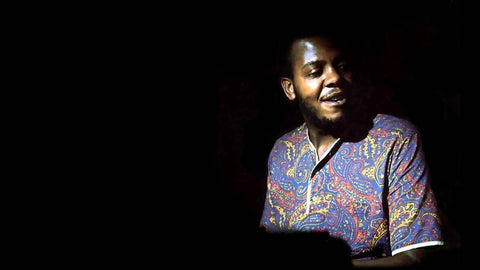\n\nOne of the greatest of jazz Hammond organists, **Larry Young** (aka Khalid Yasin Abdul Aziz) played with Jimi Hendrix, Miles Davis, Elvin Jones, Grant Green, Santana, Booker Ervin and others in a career that played bop, soul-jazz, blues, psych-rock, avant-garde jazz, modal and funk-rock.\n\nThe _Lawrence of Newark_ was born in Jersey and learned organ and piano from his father. He played R&B in the '50s before working with Kenny Dorham, Lou Donaldson, Hank Mobley and others. He recorded for Prestige and Blue Note in the '60s before hooking up with Hendrix on some well-circulated (and worthy) sessions.\n\nHe played on Miles' _Bitches Brew_ and with Tony Williams' Lifetime. His 1975 project _Fuel_ was a heavy funk-rock record for Arista. His _Lawrence of Newark_ album for Perception is a psychedelic jazz classic (with Pharoah Sanders and James \"Blood\" Ulmer). He died at 37 from a mysterious stomach ailment. He was the \"John Coltrane of the organ\" and there may never be another like him.",
"filePath": "content/posts/larry-young-oct-7-1940-march-30-1978.md",
"digest": "9bc0c2d6660c7f8a",
"rendered": {
"html": "<p><img src=\"/images/fd5e8d91a4086e0e5c687ba52542cd02_large.jpg\" alt=\"\"></p>\n<p>One of the greatest of jazz Hammond organists, <strong>Larry Young</strong> (aka Khalid Yasin Abdul Aziz) played with Jimi Hendrix, Miles Davis, Elvin Jones, Grant Green, Santana, Booker Ervin and others in a career that played bop, soul-jazz, blues, psych-rock, avant-garde jazz, modal and funk-rock.</p>\n<p>The <em>Lawrence of Newark</em> was born in Jersey and learned organ and piano from his father. He played R&B in the ’50s before working with Kenny Dorham, Lou Donaldson, Hank Mobley and others. He recorded for Prestige and Blue Note in the ’60s before hooking up with Hendrix on some well-circulated (and worthy) sessions.</p>\n<p>He played on Miles’ <em>Bitches Brew</em> and with Tony Williams’ Lifetime. His 1975 project <em>Fuel</em> was a heavy funk-rock record for Arista. His <em>Lawrence of Newark</em> album for Perception is a psychedelic jazz classic (with Pharoah Sanders and James “Blood” Ulmer). He died at 37 from a mysterious stomach ailment. He was the “John Coltrane of the organ” and there may never be another like him.</p>",
"metadata": {
"headings": [],
"localImagePaths": [],
"remoteImagePaths": [],
"frontmatter": {
"web-scraper-order": "1746562169-514",
"web-scraper-start-url": "https://peaceandrhythm.com",
"title": "Larry Young / Oct 7, 1940 - March 30, 1978",
"pagination": "https://www.peaceandrhythm.com/?page=9",
"date": "October 07, 2017",
"post": "Larry Young / Oct 7, 1940 - March 30, 1978",
"post-href": "https://www.peaceandrhythm.com/blogs/news/larry-young-oct-7-1940-march-30-1978",
"slug": "larry-young-oct-7-1940-march-30-1978"
},
"imagePaths": []
}
},
"collection": "blog"
},
{
"id": "brother-bones-oct-4-1902-june-14-1974",
"data": {
"title": "Brother Bones / Oct 4, 1902 - June 14, 1974",
"slug": "brother-bones-oct-4-1902-june-14-1974",
"date": "2017-10-04T00:00:00.000Z"
},
"body": "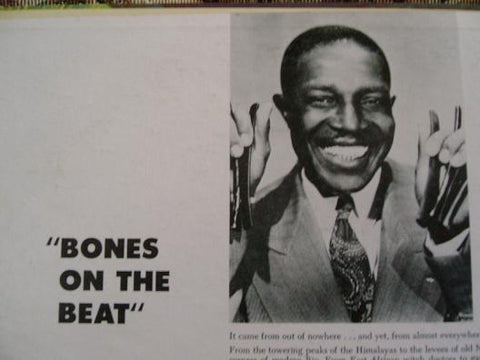\n\nIf you ever wondered who that was whistling that tune for the Harlem Globetrotters basketball team theme song, well it's Freeman Davis aka **Brother Bones** , who was born today in 1902.\n\nA fairly obscure guy, he was from Montgomery AL and worked as a shoeshine boy before he recorded an animal bones & whistling version of the \"Sweet Georgia Brown\" standard in 1949, which is the version I grew up loving in relation to the 'Trotters. (Notably, the tune also utilizes the Novachord, a very early synthesizer). Brother's tune \"Black Eyed Susan Brown\" was sampled by De La Soul (\"Pease Porridge\").\n\nHe was also known in Montgomery as \"Whistlin' Sam\". He whistled, tap-danced, played four bones in each hand and also played with knives. He recorded a few joints, appeared in a few flicks and sang at Carnegie Hall and on _The Ed Sullivan Show_.",
"filePath": "content/posts/brother-bones-oct-4-1902-june-14-1974.md",
"digest": "3d5eedfee4a97b06",
"rendered": {
"html": "<p><img src=\"/images/sale023_large.jpg\" alt=\"\"></p>\n<p>If you ever wondered who that was whistling that tune for the Harlem Globetrotters basketball team theme song, well it’s Freeman Davis aka <strong>Brother Bones</strong> , who was born today in 1902.</p>\n<p>A fairly obscure guy, he was from Montgomery AL and worked as a shoeshine boy before he recorded an animal bones & whistling version of the “Sweet Georgia Brown” standard in 1949, which is the version I grew up loving in relation to the ‘Trotters. (Notably, the tune also utilizes the Novachord, a very early synthesizer). Brother’s tune “Black Eyed Susan Brown” was sampled by De La Soul (“Pease Porridge”).</p>\n<p>He was also known in Montgomery as “Whistlin’ Sam”. He whistled, tap-danced, played four bones in each hand and also played with knives. He recorded a few joints, appeared in a few flicks and sang at Carnegie Hall and on <em>The Ed Sullivan Show</em>.</p>",
"metadata": {
"headings": [],
"localImagePaths": [],
"remoteImagePaths": [],
"frontmatter": {
"web-scraper-order": "1746562162-511",
"web-scraper-start-url": "https://peaceandrhythm.com",
"title": "Brother Bones / Oct 4, 1902 - June 14, 1974",
"pagination": "https://www.peaceandrhythm.com/?page=10",
"date": "October 04, 2017",
"post": "Brother Bones / Oct 4, 1902 - June 14, 1974",
"post-href": "https://www.peaceandrhythm.com/blogs/news/brother-bones-oct-4-1902-june-14-1974",
"slug": "brother-bones-oct-4-1902-june-14-1974"
},
"imagePaths": []
}
},
"collection": "blog"
},
{
"id": "leon-thomas-oct-4-1937-may-8-1999",
"data": {
"title": "Leon Thomas / Oct 4, 1937 - May 8, 1999",
"slug": "leon-thomas-oct-4-1937-may-8-1999",
"date": "2017-10-04T00:00:00.000Z"
},
"body": "\n\nOne of the most unique vocalists of the jazz world, Brother **Leon Thomas** had an updated, yet ancient, style of scat-yodeling that was quite soulful and seemed to come from deep, not just from his inner being but also traveling folky songlines. He claimed to have discovered using that style after breaking his teeth before a concert.\n\nMost famous for his contributions to the great late '60s run of Pharoah Sanders albums on Impulse! followed by an early '70s run with the Santana band (including the amazing 1973 tour of Japan), he also cut records of his own including some great albums on Flying Dutchman. His style was fairly normal, yet soulful, until he hit onto his extended techniques. The music blended avant-jazz, African, blues, scat, soul-jazz, black power and Latin grooves. He also played percussion on some records.\n\nFrom East St. Louis, he went to college in Tennessee before moving to NYC in '58. He found early work with Randy Weston, Roland Kirk, Grant Green, Hank Crawford, and others and sang with Count Basie in the first half of the '60s. He worked with Johnny Hodges and Oliver Nelson on an album in '69.\n\nFollowing his stints with Pharoah and Santana, he gigged or recorded with Archie Shepp, Ornette Coleman, David Liebman, Mary Lou Williams, Freddie Hubbard, Cedar Walton, Gary Bartz and also on Louis Armstrong's last album. He sang with Pharoah again in the '80s and was a major influence on Tim Buckley, James Moody and Bobby McFerrin, among others. After years of drug abuse, he passed away of heart failure at 61. \"Shape Your Mind To Die\" is a killer piece of dark jazz.",
"filePath": "content/posts/leon-thomas-oct-4-1937-may-8-1999.md",
"digest": "602ce6d7bfa61365",
"rendered": {
"html": "<p><img src=\"/images/leon_thomas_07_large.jpg\" alt=\"\"></p>\n<p>One of the most unique vocalists of the jazz world, Brother <strong>Leon Thomas</strong> had an updated, yet ancient, style of scat-yodeling that was quite soulful and seemed to come from deep, not just from his inner being but also traveling folky songlines. He claimed to have discovered using that style after breaking his teeth before a concert.</p>\n<p>Most famous for his contributions to the great late ’60s run of Pharoah Sanders albums on Impulse! followed by an early ’70s run with the Santana band (including the amazing 1973 tour of Japan), he also cut records of his own including some great albums on Flying Dutchman. His style was fairly normal, yet soulful, until he hit onto his extended techniques. The music blended avant-jazz, African, blues, scat, soul-jazz, black power and Latin grooves. He also played percussion on some records.</p>\n<p>From East St. Louis, he went to college in Tennessee before moving to NYC in ‘58. He found early work with Randy Weston, Roland Kirk, Grant Green, Hank Crawford, and others and sang with Count Basie in the first half of the ’60s. He worked with Johnny Hodges and Oliver Nelson on an album in ‘69.</p>\n<p>Following his stints with Pharoah and Santana, he gigged or recorded with Archie Shepp, Ornette Coleman, David Liebman, Mary Lou Williams, Freddie Hubbard, Cedar Walton, Gary Bartz and also on Louis Armstrong’s last album. He sang with Pharoah again in the ’80s and was a major influence on Tim Buckley, James Moody and Bobby McFerrin, among others. After years of drug abuse, he passed away of heart failure at 61. “Shape Your Mind To Die” is a killer piece of dark jazz.</p>",
"metadata": {
"headings": [],
"localImagePaths": [],
"remoteImagePaths": [],
"frontmatter": {
"web-scraper-order": "1746562167-513",
"web-scraper-start-url": "https://peaceandrhythm.com",
"title": "Leon Thomas / Oct 4, 1937 - May 8, 1999",
"pagination": "https://www.peaceandrhythm.com/?page=10",
"date": "October 04, 2017",
"post": "Leon Thomas / Oct 4, 1937 - May 8, 1999",
"post-href": "https://www.peaceandrhythm.com/blogs/news/leon-thomas-oct-4-1937-may-8-1999",
"slug": "leon-thomas-oct-4-1937-may-8-1999"
},
"imagePaths": []
}
},
"collection": "blog"
},
{
"id": "violeta-parra-oct-4-1917-feb-5-1967",
"data": {
"title": "Violeta Parra / Oct 4, 1917 - Feb 5, 1967",
"slug": "violeta-parra-oct-4-1917-feb-5-1967",
"date": "2017-10-04T00:00:00.000Z"
},
"body": "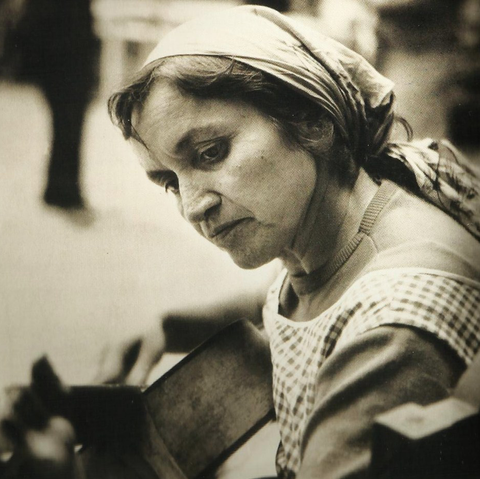\n\nHere's a birthday honor to pioneering _nueva-canción_ singer and folklorist from Chile, **Violeta Parra** aka \"Violeta de Mayo\". She was born into an educated family of poets, artists and singers, and she started playing and singing at 9. Her musician/farmer father died when she was 12, and the family started struggling financially. She started her music career in clubs playing boleros and Mexican styles before marrying a Communist in 1938.\n\nShe started singing songs from all over Latin America. After her first marriage dissolved, she formed a duo with her sister and made some records, followed by some touring through South America with circuses. In '52 she started exclusively focusing on Chilean folk tunes and peasant songs, touring and teaching at universities. It was around that time she added the guitarrón to her guitar. She befriended Pablo Neruda and hosted a longtime radio show.\n\nIn the mid-'50s she moved to France and toured and recorded around Europe. In '56 she returned to Chile and started a series of influential ethnomusicologist albums, as well as teaching and writing about Chilean folklore. She was also a serious painter & craftsperson.\n\nIn the '60s she was between Chile, Argentina and Europe (where she had a romantic relationship with flautist Gilbert Favre) and she picked up the Venezuelan cuatro into her arsenal. She recorded some sides with her children and formed a community center in Santiago.\n\nHer 1965 song \"Gracias a la Vida\" has been covered by Mercedes Sosa, Elis Regina, Joan Baez, Michael Bublé and others worldwide. The song was interpreted as a suicide note, as Violeta ended her own life with a gunshot to her head. Her children have continued with music and her legacy in song and folklore remain legendary.",
"filePath": "content/posts/violeta-parra-oct-4-1917-feb-5-1967.md",
"digest": "ed0217ae4d7c7116",
"rendered": {
"html": "<p><img src=\"/images/Violeta_Parra_PNG_large.png\" alt=\"\"></p>\n<p>Here’s a birthday honor to pioneering <em>nueva-canción</em> singer and folklorist from Chile, <strong>Violeta Parra</strong> aka “Violeta de Mayo”. She was born into an educated family of poets, artists and singers, and she started playing and singing at 9. Her musician/farmer father died when she was 12, and the family started struggling financially. She started her music career in clubs playing boleros and Mexican styles before marrying a Communist in 1938.</p>\n<p>She started singing songs from all over Latin America. After her first marriage dissolved, she formed a duo with her sister and made some records, followed by some touring through South America with circuses. In ‘52 she started exclusively focusing on Chilean folk tunes and peasant songs, touring and teaching at universities. It was around that time she added the guitarrón to her guitar. She befriended Pablo Neruda and hosted a longtime radio show.</p>\n<p>In the mid-’50s she moved to France and toured and recorded around Europe. In ‘56 she returned to Chile and started a series of influential ethnomusicologist albums, as well as teaching and writing about Chilean folklore. She was also a serious painter & craftsperson.</p>\n<p>In the ’60s she was between Chile, Argentina and Europe (where she had a romantic relationship with flautist Gilbert Favre) and she picked up the Venezuelan cuatro into her arsenal. She recorded some sides with her children and formed a community center in Santiago.</p>\n<p>Her 1965 song “Gracias a la Vida” has been covered by Mercedes Sosa, Elis Regina, Joan Baez, Michael Bublé and others worldwide. The song was interpreted as a suicide note, as Violeta ended her own life with a gunshot to her head. Her children have continued with music and her legacy in song and folklore remain legendary.</p>",
"metadata": {
"headings": [],
"localImagePaths": [],
"remoteImagePaths": [],
"frontmatter": {
"web-scraper-order": "1746562165-512",
"web-scraper-start-url": "https://peaceandrhythm.com",
"title": "Violeta Parra / Oct 4, 1917 - Feb 5, 1967",
"pagination": "https://www.peaceandrhythm.com/?page=10",
"date": "October 04, 2017",
"post": "Violeta Parra / Oct 4, 1917 - Feb 5, 1967",
"post-href": "https://www.peaceandrhythm.com/blogs/news/violeta-parra-oct-4-1917-feb-5-1967",
"slug": "violeta-parra-oct-4-1917-feb-5-1967"
},
"imagePaths": []
}
},
"collection": "blog"
},
{
"id": "eddie-cochran-oct-3-1938-april-17-1960",
"data": {
"title": "Eddie Cochran / Oct 3, 1938 - April 17, 1960",
"slug": "eddie-cochran-oct-3-1938-april-17-1960",
"date": "2017-10-03T00:00:00.000Z"
},
"body": "**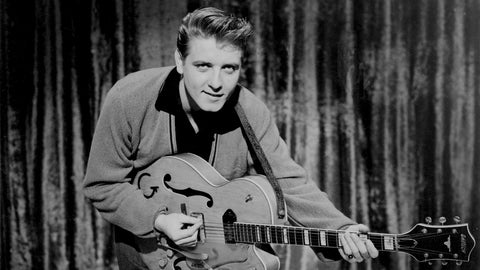**\n\n**Eddie Cochran** , rockabilly icon of the '50s who perhaps set the template for the rebellious, tough rocker image, was born on this day in 1938. He was an innovative guitarist, a proto-punk influence and an early experimenter of overdubbing and multitracking. He remains one of the great heroes of early rock & roll.\n\nOriginally from Minnesota, as a teenager he moved with his family to Los Angeles. He started off playing drums as a kid before learning guitar. He was into blues & country and dropped out of high school to become a professional musician. In '54 was part of a duet with Hank Cochran (of whom he is no relation) as the Cochran Brothers, recording some sides. He worked as a session musician (including with Johnny Burnette and Gene Vincent), cut his first solo record in '55 and then appeared in the flick _The Girl Can't Help It_ in '56, which greatly boosted his visibility.\n\nHis first album came in '57 and then he blew up with his massively influential \"Summertime Blues\". Another awesome hit was '59's \"Something Else\", later covered by the Sex Pistols, as well as \"C'mon Everybody\". With the plane crash deaths of his friends Buddy Holly, Ritchie Valens and the Big Bopper, he developed a premonition that he would die young. In fact he had planned to take a retirement from touring after a planned UK run in 1960.\n\nHowever, true to his fears, he died at just 21 in a taxi crash on that tour. Gene Vincent, his fianceé, his manager and the driver all survived the crash, although Vincent suffered a debilitating injury that plagued his career. After his death the hits kept coming for awhile. His tunes have been covered by The Who, Led Zeppelin, Jimi Hendrix, the Rolling Stones, Bruce Springsteen, Motorhead, Van Halen, T. Rex, Rush, U2, Beach Boys, Buck Owens...and of course that mega-heavy Blue Cheer version of \"Summertime Blues\".",
"filePath": "content/posts/eddie-cochran-oct-3-1938-april-17-1960.md",
"digest": "0cd0a45400973c77",
"rendered": {
"html": "<p><strong><img src=\"/images/cochran-eddie-51cae6ff214d9_large.jpg\" alt=\"\"></strong></p>\n<p><strong>Eddie Cochran</strong> , rockabilly icon of the ’50s who perhaps set the template for the rebellious, tough rocker image, was born on this day in 1938. He was an innovative guitarist, a proto-punk influence and an early experimenter of overdubbing and multitracking. He remains one of the great heroes of early rock & roll.</p>\n<p>Originally from Minnesota, as a teenager he moved with his family to Los Angeles. He started off playing drums as a kid before learning guitar. He was into blues & country and dropped out of high school to become a professional musician. In ‘54 was part of a duet with Hank Cochran (of whom he is no relation) as the Cochran Brothers, recording some sides. He worked as a session musician (including with Johnny Burnette and Gene Vincent), cut his first solo record in ‘55 and then appeared in the flick <em>The Girl Can’t Help It</em> in ‘56, which greatly boosted his visibility.</p>\n<p>His first album came in ‘57 and then he blew up with his massively influential “Summertime Blues”. Another awesome hit was ‘59’s “Something Else”, later covered by the Sex Pistols, as well as “C’mon Everybody”. With the plane crash deaths of his friends Buddy Holly, Ritchie Valens and the Big Bopper, he developed a premonition that he would die young. In fact he had planned to take a retirement from touring after a planned UK run in 1960.</p>\n<p>However, true to his fears, he died at just 21 in a taxi crash on that tour. Gene Vincent, his fianceé, his manager and the driver all survived the crash, although Vincent suffered a debilitating injury that plagued his career. After his death the hits kept coming for awhile. His tunes have been covered by The Who, Led Zeppelin, Jimi Hendrix, the Rolling Stones, Bruce Springsteen, Motorhead, Van Halen, T. Rex, Rush, U2, Beach Boys, Buck Owens…and of course that mega-heavy Blue Cheer version of “Summertime Blues”.</p>",
"metadata": {
"headings": [],
"localImagePaths": [],
"remoteImagePaths": [],
"frontmatter": {
"web-scraper-order": "1746562158-509",
"web-scraper-start-url": "https://peaceandrhythm.com",
"title": "Eddie Cochran / Oct 3, 1938 - April 17, 1960",
"pagination": "https://www.peaceandrhythm.com/?page=10",
"date": "October 03, 2017",
"post": "Eddie Cochran / Oct 3, 1938 - April 17, 1960",
"post-href": "https://www.peaceandrhythm.com/blogs/news/eddie-cochran-oct-3-1938-april-17-1960",
"slug": "eddie-cochran-oct-3-1938-april-17-1960"
},
"imagePaths": []
}
},
"collection": "blog"
},
{
"id": "von-freeman-oct-3-1923-aug-11-2012",
"data": {
"title": "Von Freeman / Oct 3, 1923 - Aug 11, 2012",
"slug": "von-freeman-oct-3-1923-aug-11-2012",
"date": "2017-10-03T00:00:00.000Z"
},
"body": "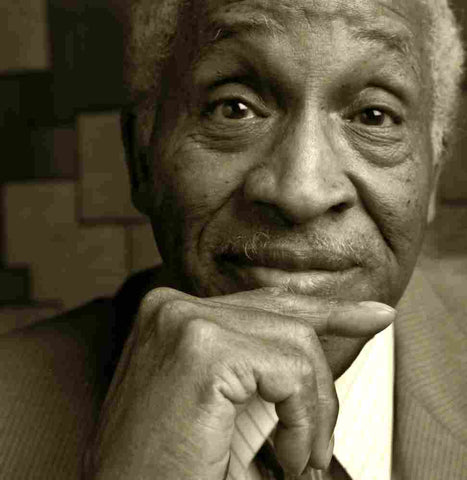\n\nBy comparison to some of his other fellow Chicagoan jazz brothers and sisters, the music of **Von Freeman** is fairly traditional sounding--that is to say blues, ballads, bossa, bop and a touch of soul-jazz, although his phrasing and mentoring was influential to a rising avant-garde in the city. He may have been less well-known than his funky guitarist brother George and son Chico (there was a less-well-known drummer brother Bruz as well), but he continued with his creative outlet until the end.\n\nHe was born in Chicago, the son of a cop. Louis Armstrong was a good friend of the family and even lived with the Freemans for awhile. He learned piano and then picked up the saxophone at 7. He studied with in the famous DuSable High music program which produced a veritable school of giant players under Capt Walter Dyett.\n\nAt 16 he joined the Horace Henderson Orchestra before a late '40s run with his brothers backing visiting artists like Charlie Parker & Dizzy Gillespie. (There is a 1950 performance with Bird & the Freeman brothers available). In the early '50s he was a member of the newly-formed Sun Ra Arkestra. He recorded some sax on some doo-wop sides in the mid-'50s, as well as work with young progressive piano genius Andrew Hill and jump-blues singer Jimmy Witherspoon.\n\nHe was inactive for a bit but got a record deal with Atlantic, with the help of Rahsaan Roland Kirk, who produced Freeman's 1972 debut full-length _Doin' It Right Now_. A few titles followed for Nessa, Muse, Black Saint and others. He also cut several records with his son Chico (also a tenor player, and a better-known one), as well as collaborations with Yusef Lateef, Willis Jackson, Kurt Elling, Steve Coleman, Clifford Jordan and others.\n\nHe continued to work in Chicago with his son and younger local players until his death a few years ago. Along with Jordan, Johnny Griffin, John Gilmore and Gene Ammons, he was a Chicago tenor legend that inspired players to come.",
"filePath": "content/posts/von-freeman-oct-3-1923-aug-11-2012.md",
"digest": "6d254e3cfac1cd68",
"rendered": {
"html": "<p><img src=\"/images/vonski_custom-2b9945a5602622a9529cf2df128ffa1d9f6e238e-s1100-c15_large.jpg\" alt=\"\"></p>\n<p>By comparison to some of his other fellow Chicagoan jazz brothers and sisters, the music of <strong>Von Freeman</strong> is fairly traditional sounding—that is to say blues, ballads, bossa, bop and a touch of soul-jazz, although his phrasing and mentoring was influential to a rising avant-garde in the city. He may have been less well-known than his funky guitarist brother George and son Chico (there was a less-well-known drummer brother Bruz as well), but he continued with his creative outlet until the end.</p>\n<p>He was born in Chicago, the son of a cop. Louis Armstrong was a good friend of the family and even lived with the Freemans for awhile. He learned piano and then picked up the saxophone at 7. He studied with in the famous DuSable High music program which produced a veritable school of giant players under Capt Walter Dyett.</p>\n<p>At 16 he joined the Horace Henderson Orchestra before a late ’40s run with his brothers backing visiting artists like Charlie Parker & Dizzy Gillespie. (There is a 1950 performance with Bird & the Freeman brothers available). In the early ’50s he was a member of the newly-formed Sun Ra Arkestra. He recorded some sax on some doo-wop sides in the mid-’50s, as well as work with young progressive piano genius Andrew Hill and jump-blues singer Jimmy Witherspoon.</p>\n<p>He was inactive for a bit but got a record deal with Atlantic, with the help of Rahsaan Roland Kirk, who produced Freeman’s 1972 debut full-length <em>Doin’ It Right Now</em>. A few titles followed for Nessa, Muse, Black Saint and others. He also cut several records with his son Chico (also a tenor player, and a better-known one), as well as collaborations with Yusef Lateef, Willis Jackson, Kurt Elling, Steve Coleman, Clifford Jordan and others.</p>\n<p>He continued to work in Chicago with his son and younger local players until his death a few years ago. Along with Jordan, Johnny Griffin, John Gilmore and Gene Ammons, he was a Chicago tenor legend that inspired players to come.</p>",
"metadata": {
"headings": [],
"localImagePaths": [],
"remoteImagePaths": [],
"frontmatter": {
"web-scraper-order": "1746562160-510",
"web-scraper-start-url": "https://peaceandrhythm.com",
"title": "Von Freeman / Oct 3, 1923 - Aug 11, 2012",
"pagination": "https://www.peaceandrhythm.com/?page=10",
"date": "October 03, 2017",
"post": "Von Freeman / Oct 3, 1923 - Aug 11, 2012",
"post-href": "https://www.peaceandrhythm.com/blogs/news/von-freeman-oct-3-1923-aug-11-2012",
"slug": "von-freeman-oct-3-1923-aug-11-2012"
},
"imagePaths": []
}
},
"collection": "blog"
},
{
"id": "donny-hathaway-oct-1-1945-jan-13-1979",
"data": {
"title": "Donny Hathaway / Oct 1, 1945 - Jan 13, 1979",
"slug": "donny-hathaway-oct-1-1945-jan-13-1979",
"date": "2017-10-01T00:00:00.000Z"
},
"body": "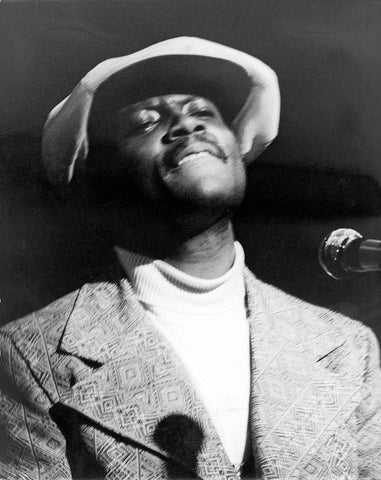\n\nMuch respect to the well-loved **Donny Hathaway** , the great gospel-inspired singer and songwriter, as well as pianist, producer and arranger. His music covered soul, gospel, pop, blues, jazz, Christmas songs, ballads, funk and even Latin, in a nice mix of both originals and covers. \n\nBorn in Chicago to a gospel-singing family, he grew up in St. Louis. He started singing in church at age 3 and was playing piano young as well. He studied music at Howard University, where he also played in a jazz trio with Ric Powell and rolled with Roberta Flack and Leroy Hutson. He started working as a session musician for folks like Jerry Butler, The Impressions, Aretha Franklin, Staple Singers, Phil Upchurch and Curtis Mayfield. In the late '60s he started working as both a producer and recording artist for Mayfield's Curtom label.\n\nHe signed to Atco in '69 and had a hit with \"The Ghetto\". He cut duets with Flack that became hugely successful. He started scoring for films and TV (the _Maude_ theme song!). He produced the awesome funk-rock band Cold Blood and his own _Live_ album from '72 was a highlight of his catalogue.\n\nIn '73 he released _Extension Of A Man_ but his bipolar disorder and schizophrenia greatly effected his career and he largely stayed out of the limelight. He reunited with Flack in the late '70s but jumped out of his apartment window, down 15 floors to his tragic death, a suicide at 33. His daughters Lalah Hathaway and Kenya Hathaway are professional singers. Donny remains much loved.",
"filePath": "content/posts/donny-hathaway-oct-1-1945-jan-13-1979.md",
"digest": "5c03bc09ae33d613",
"rendered": {
"html": "<p><img src=\"/images/071712-music-best-rb-albums-Donny-Hathaway_large.jpg\" alt=\"\"></p>\n<p>Much respect to the well-loved <strong>Donny Hathaway</strong> , the great gospel-inspired singer and songwriter, as well as pianist, producer and arranger. His music covered soul, gospel, pop, blues, jazz, Christmas songs, ballads, funk and even Latin, in a nice mix of both originals and covers.</p>\n<p>Born in Chicago to a gospel-singing family, he grew up in St. Louis. He started singing in church at age 3 and was playing piano young as well. He studied music at Howard University, where he also played in a jazz trio with Ric Powell and rolled with Roberta Flack and Leroy Hutson. He started working as a session musician for folks like Jerry Butler, The Impressions, Aretha Franklin, Staple Singers, Phil Upchurch and Curtis Mayfield. In the late ’60s he started working as both a producer and recording artist for Mayfield’s Curtom label.</p>\n<p>He signed to Atco in ‘69 and had a hit with “The Ghetto”. He cut duets with Flack that became hugely successful. He started scoring for films and TV (the <em>Maude</em> theme song!). He produced the awesome funk-rock band Cold Blood and his own <em>Live</em> album from ‘72 was a highlight of his catalogue.</p>\n<p>In ‘73 he released <em>Extension Of A Man</em> but his bipolar disorder and schizophrenia greatly effected his career and he largely stayed out of the limelight. He reunited with Flack in the late ’70s but jumped out of his apartment window, down 15 floors to his tragic death, a suicide at 33. His daughters Lalah Hathaway and Kenya Hathaway are professional singers. Donny remains much loved.</p>",
"metadata": {
"headings": [],
"localImagePaths": [],
"remoteImagePaths": [],
"frontmatter": {
"web-scraper-order": "1746562156-508",
"web-scraper-start-url": "https://peaceandrhythm.com",
"title": "Donny Hathaway / Oct 1, 1945 - Jan 13, 1979",
"pagination": "https://www.peaceandrhythm.com/?page=11",
"date": "October 01, 2017",
"post": "Donny Hathaway / Oct 1, 1945 - Jan 13, 1979",
"post-href": "https://www.peaceandrhythm.com/blogs/news/donny-hathaway-oct-1-1945-jan-13-1979",
"slug": "donny-hathaway-oct-1-1945-jan-13-1979"
},
"imagePaths": []
}
},
"collection": "blog"
},
{
"id": "mariska-veres-oct-1-1947-dec-2-2006",
"data": {
"title": "Mariska Veres / Oct 1, 1947 - Dec 2, 2006",
"slug": "mariska-veres-oct-1-1947-dec-2-2006",
"date": "2017-10-01T00:00:00.000Z"
},
"body": "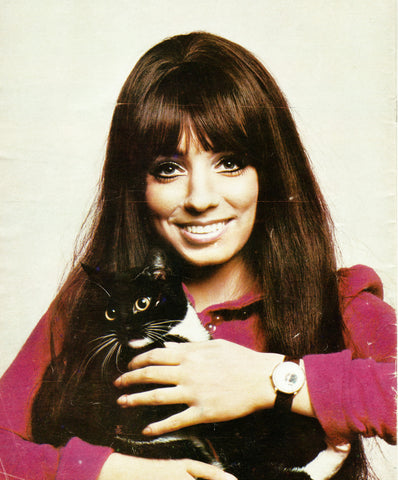\n\nOne of my favorite '60s rock singers, Dutch gypsy vocalist **Mariska Veres** had a powerful presence as front woman for the arty psych band Shocking Blue, one of the great teenage rock bands of the era. Best known for their original version of \"Venus\" (covered thousands of times, literally, around the world) and their FAR SUPERIOR original version of \"Love Buzz\" (covered by Nirvana), they had a lot of great tunes! Other great tunes from them are the Indian-tinged \"Acka Raga\", \"Send Me A Postcard\" and other killers.\n\nBorn in The Hague, her father was a Hungarian/Romani gypsy violinist and she learned piano as a girl. At 16 she joined the beat band Les Mysteres as vocalist. They recorded a single in '64 and she joined several other bands around that time, including playing organ in one of them. She made a few singles under her own name before she replaced the departed male vocalist for Shocking Blue in '68. They had a huge hit with \"Venus\" and they became one of the biggest bands in the Netherlands, Russia and Europe, but had success in markets around the world. \n\nAfter the group split in '74, she started a solo career. Shocking Blue reunited in '84 to some success but was torn apart over the smash hit cover of \"Venus\" by Bananarama in '86. In '93 she formed the Shocking Jazz Quintet with the cheesy concept of recording jazz covers of classic rock hits. The end part of her life found her back with Shocking Blue. She sang in various languages and rediscovered her gypsy roots as she grew older.",
"filePath": "content/posts/mariska-veres-oct-1-1947-dec-2-2006.md",
"digest": "dfc69c482b61d5c4",
"rendered": {
"html": "<p><img src=\"/images/tumblr_md1rf0vOYA1qg03pro1_1280_large.jpg\" alt=\"\"></p>\n<p>One of my favorite ’60s rock singers, Dutch gypsy vocalist <strong>Mariska Veres</strong> had a powerful presence as front woman for the arty psych band Shocking Blue, one of the great teenage rock bands of the era. Best known for their original version of “Venus” (covered thousands of times, literally, around the world) and their FAR SUPERIOR original version of “Love Buzz” (covered by Nirvana), they had a lot of great tunes! Other great tunes from them are the Indian-tinged “Acka Raga”, “Send Me A Postcard” and other killers.</p>\n<p>Born in The Hague, her father was a Hungarian/Romani gypsy violinist and she learned piano as a girl. At 16 she joined the beat band Les Mysteres as vocalist. They recorded a single in ‘64 and she joined several other bands around that time, including playing organ in one of them. She made a few singles under her own name before she replaced the departed male vocalist for Shocking Blue in ‘68. They had a huge hit with “Venus” and they became one of the biggest bands in the Netherlands, Russia and Europe, but had success in markets around the world.</p>\n<p>After the group split in ‘74, she started a solo career. Shocking Blue reunited in ‘84 to some success but was torn apart over the smash hit cover of “Venus” by Bananarama in ‘86. In ‘93 she formed the Shocking Jazz Quintet with the cheesy concept of recording jazz covers of classic rock hits. The end part of her life found her back with Shocking Blue. She sang in various languages and rediscovered her gypsy roots as she grew older.</p>",
"metadata": {
"headings": [],
"localImagePaths": [],
"remoteImagePaths": [],
"frontmatter": {
"web-scraper-order": "1746562153-507",
"web-scraper-start-url": "https://peaceandrhythm.com",
"title": "Mariska Veres / Oct 1, 1947 - Dec 2, 2006",
"pagination": "https://www.peaceandrhythm.com/?page=11",
"date": "October 01, 2017",
"post": "Mariska Veres / Oct 1, 1947 - Dec 2, 2006",
"post-href": "https://www.peaceandrhythm.com/blogs/news/mariska-veres-oct-1-1947-dec-2-2006",
"slug": "mariska-veres-oct-1-1947-dec-2-2006"
},
"imagePaths": []
}
},
"collection": "blog"
},
{
"id": "frankie-lymon-sept-30-1942-feb-27-1968",
"data": {
"title": "Frankie Lymon / Sept 30, 1942 - Feb 27, 1968",
"slug": "frankie-lymon-sept-30-1942-feb-27-1968",
"date": "2017-09-30T00:00:00.000Z"
},
"body": "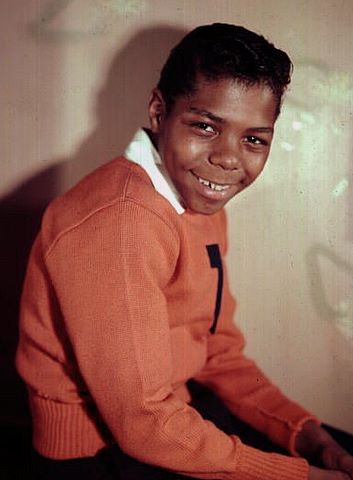\n\nHappy birthday to singer/songwriter/dancer **Frankie Lymon** , teenage superstar of the '50s. His tune \"Why Do Fools Fall In Love\", with his group The Teenagers, is still a perennial classic to this day. \n\nBorn in Harlem, he sang gospel with his sister. He dropped out of school at 10 to work in a store. At 12 he joined a doo-wop group that ultimately became The Teenagers, an integrated vocal group. At the 1956 session for \"Why Do Fools Fall In Love\", the lead singer was late so Lymon's sweet soprano took the lead and the rest is history. He became an early black pop idol. \"The ABC's of Love\", \"I Want You To Be My Girl\" and \"I'm Not A Juvenile Delinquent\" were among the several other big hits the group charted with. \n\nLymon went solo in '57 but his career took a hit when he started dancing with a white girl on TV, causing negative business ripples with racist advertisers. It was around this time, at age 15, that he got addicted to heroin. His voice then changed and his recordings became less successful. In '65 he briefly reunited with The Teenagers, but it didn't result in much. He was married three times and cleaned up while in the military. But celebrating a new record deal in '68, he died in his grandmother's bathroom of a heroin overdose. He was just 25. \n\nLymon's records and style was a huge influence on the Jackson 5, as well as the Beach Boys, Diana Ross, The Temptations and many others.",
"filePath": "content/posts/frankie-lymon-sept-30-1942-feb-27-1968.md",
"digest": "934b03abeb0508e6",
"rendered": {
"html": "<p><img src=\"/images/9929_121557018699_large.jpg\" alt=\"\"></p>\n<p>Happy birthday to singer/songwriter/dancer <strong>Frankie Lymon</strong> , teenage superstar of the ’50s. His tune “Why Do Fools Fall In Love”, with his group The Teenagers, is still a perennial classic to this day.</p>\n<p>Born in Harlem, he sang gospel with his sister. He dropped out of school at 10 to work in a store. At 12 he joined a doo-wop group that ultimately became The Teenagers, an integrated vocal group. At the 1956 session for “Why Do Fools Fall In Love”, the lead singer was late so Lymon’s sweet soprano took the lead and the rest is history. He became an early black pop idol. “The ABC’s of Love”, “I Want You To Be My Girl” and “I’m Not A Juvenile Delinquent” were among the several other big hits the group charted with.</p>\n<p>Lymon went solo in ‘57 but his career took a hit when he started dancing with a white girl on TV, causing negative business ripples with racist advertisers. It was around this time, at age 15, that he got addicted to heroin. His voice then changed and his recordings became less successful. In ‘65 he briefly reunited with The Teenagers, but it didn’t result in much. He was married three times and cleaned up while in the military. But celebrating a new record deal in ‘68, he died in his grandmother’s bathroom of a heroin overdose. He was just 25.</p>\n<p>Lymon’s records and style was a huge influence on the Jackson 5, as well as the Beach Boys, Diana Ross, The Temptations and many others.</p>",
"metadata": {
"headings": [],
"localImagePaths": [],
"remoteImagePaths": [],
"frontmatter": {
"web-scraper-order": "1746562151-506",
"web-scraper-start-url": "https://peaceandrhythm.com",
"title": "Frankie Lymon / Sept 30, 1942 - Feb 27, 1968",
"pagination": "https://www.peaceandrhythm.com/?page=11",
"date": "September 30, 2017",
"post": "Frankie Lymon / Sept 30, 1942 - Feb 27, 1968",
"post-href": "https://www.peaceandrhythm.com/blogs/news/frankie-lymon-sept-30-1942-feb-27-1968",
"slug": "frankie-lymon-sept-30-1942-feb-27-1968"
},
"imagePaths": []
}
},
"collection": "blog"
},
{
"id": "hector-lavoe-sept-30-1946-june-29-1993",
"data": {
"title": "Héctor Lavoe / Sept 30, 1946 - June 29, 1993",
"slug": "hector-lavoe-sept-30-1946-june-29-1993",
"date": "2017-09-30T00:00:00.000Z"
},
"body": "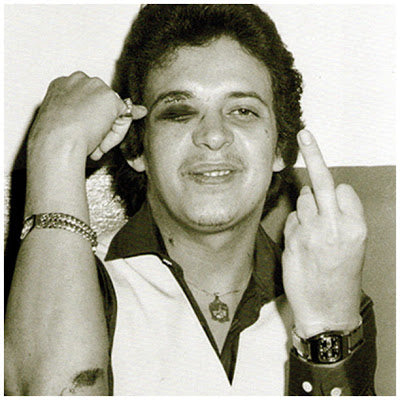\n\nOne of the greatest figures in salsa music, Puerto Rican sonero Héctor Juan Pérez Martínez was born on this day in 1946. Born in Ponce PR, **Héctor Lavoe** was childhood friends with Papo Lucca.\n\nHe moved to NYC at 16, joined Willie Colón's revolutionary band and they proceeded to slay their way to the top of the salsa world. With a smash band, he was thrown into a lifestyle of hard drugs and partying. Combined with several tragedies in his family and community, his habits started catching up to him. In '73 he started his solo career and he had a run with the Fania All-Stars during their biggest years. He also worked with Johnny Pacheco, Tito Puente and Kako. His body destroyed by drugs, he died of AIDS in '93.\n\nHis vocal command and delivery, his showmanship, as well as his ability to improvise, turned him into the biggest salsa superstar in the world. \"El Cantante\", \"Hacha y Machete\", \"Sonero Mayor\", \"El Malo\", \"Juana Peña\", \"Mi Gente\", \"Calle Luna Calle Sol\", \"El Sabio\", \"Aguanile\", \"Che Che Colé\", \"La Murga\", \"Isla Del Encanto\".",
"filePath": "content/posts/hector-lavoe-sept-30-1946-june-29-1993.md",
"digest": "e724e6a82b72558c",
"rendered": {
"html": "<p><img src=\"/images/lavoe_busted_large.jpg\" alt=\"\"></p>\n<p>One of the greatest figures in salsa music, Puerto Rican sonero Héctor Juan Pérez Martínez was born on this day in 1946. Born in Ponce PR, <strong>Héctor Lavoe</strong> was childhood friends with Papo Lucca.</p>\n<p>He moved to NYC at 16, joined Willie Colón’s revolutionary band and they proceeded to slay their way to the top of the salsa world. With a smash band, he was thrown into a lifestyle of hard drugs and partying. Combined with several tragedies in his family and community, his habits started catching up to him. In ‘73 he started his solo career and he had a run with the Fania All-Stars during their biggest years. He also worked with Johnny Pacheco, Tito Puente and Kako. His body destroyed by drugs, he died of AIDS in ‘93.</p>\n<p>His vocal command and delivery, his showmanship, as well as his ability to improvise, turned him into the biggest salsa superstar in the world. “El Cantante”, “Hacha y Machete”, “Sonero Mayor”, “El Malo”, “Juana Peña”, “Mi Gente”, “Calle Luna Calle Sol”, “El Sabio”, “Aguanile”, “Che Che Colé”, “La Murga”, “Isla Del Encanto”.</p>",
"metadata": {
"headings": [],
"localImagePaths": [],
"remoteImagePaths": [],
"frontmatter": {
"web-scraper-order": "1746562149-505",
"web-scraper-start-url": "https://peaceandrhythm.com",
"title": "Héctor Lavoe / Sept 30, 1946 - June 29, 1993",
"pagination": "https://www.peaceandrhythm.com/?page=11",
"date": "September 30, 2017",
"post": "Héctor Lavoe / Sept 30, 1946 - June 29, 1993",
"post-href": "https://www.peaceandrhythm.com/blogs/news/hector-lavoe-sept-30-1946-june-29-1993",
"slug": "hector-lavoe-sept-30-1946-june-29-1993"
},
"imagePaths": []
}
},
"collection": "blog"
},
{
"id": "marc-bolan-sept-30-1947-sept-16-1977",
"data": {
"title": "Marc Bolan / Sept 30, 1947 - Sept 16, 1977",
"slug": "marc-bolan-sept-30-1947-sept-16-1977",
"date": "2017-09-30T00:00:00.000Z"
},
"body": "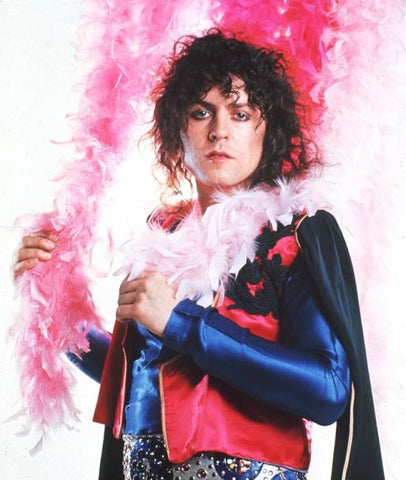\n\nGlam rock superstar **Marc Bolan** was born on this day. Born in London as Mark Feld to an Ashkenazi Jewish family, he grew up listening to the rock & roll boom. He started playing guitar at 9 and had a skiffle band as a teenager. As a young mod he did some acting and found good work as a model, as well as dabbling in poetry. He may have worked with Joe Meek as early as '63 but this is disputed. \n\nHe changed his name to Toby Tyler and recorded some cover songs in '64. He signed to Decca in '65, with his new name Marc Bolan, and released some folk-rock tunes. After nearly joining The Yardbirds, he joined John's Children as a contributing member and songwriter and his 1967 tune \"Desdemona\" was banned by the BBC as being too sexually suggestive. \n\nHe quit John's Children and started writing fantasy novels, even levitating with wizards (he claims), before putting together the psychedelic folk-rock band Tyrannosaurus Rex in late '67. They recorded a few albums to some decent success. In '69 he released a top-selling poetry book _The Warlock of Love_. He also did some session work with David Bowie around this time. \n\nIn '70 he re-branded as T. Rex, a funky and hard rocking glam band with glittery and flamboyantly stylish stage presence. The first single of the new look, \"Ride A White Swan\", reached #2 in '71 and turned Bolan into a star. \"Get It On (Bang A Gong)\" was a huge hit in '72 and the band were on their way to being one of the top sellers in the UK. \n\nHe continued guesting, contributing to albums by Ike & Tina Turner, Electric Light Orchestra and Ringo Starr. T. Rex went through various line-up changes but the music continued to stay fresh and relevant, even doing a tour with punk band The Damned. He died at 29 in a car accident with his girlfriend, singer Gloria Jones (she survived it).",
"filePath": "content/posts/marc-bolan-sept-30-1947-sept-16-1977.md",
"digest": "c8ec86f8b3c01890",
"rendered": {
"html": "<p><img src=\"/images/Marc-Bolan-marc-bolan-29522081-514-608_large.jpg\" alt=\"\"></p>\n<p>Glam rock superstar <strong>Marc Bolan</strong> was born on this day. Born in London as Mark Feld to an Ashkenazi Jewish family, he grew up listening to the rock & roll boom. He started playing guitar at 9 and had a skiffle band as a teenager. As a young mod he did some acting and found good work as a model, as well as dabbling in poetry. He may have worked with Joe Meek as early as ‘63 but this is disputed.</p>\n<p>He changed his name to Toby Tyler and recorded some cover songs in ‘64. He signed to Decca in ‘65, with his new name Marc Bolan, and released some folk-rock tunes. After nearly joining The Yardbirds, he joined John’s Children as a contributing member and songwriter and his 1967 tune “Desdemona” was banned by the BBC as being too sexually suggestive.</p>\n<p>He quit John’s Children and started writing fantasy novels, even levitating with wizards (he claims), before putting together the psychedelic folk-rock band Tyrannosaurus Rex in late ‘67. They recorded a few albums to some decent success. In ‘69 he released a top-selling poetry book <em>The Warlock of Love</em>. He also did some session work with David Bowie around this time.</p>\n<p>In ‘70 he re-branded as T. Rex, a funky and hard rocking glam band with glittery and flamboyantly stylish stage presence. The first single of the new look, “Ride A White Swan”, reached #2 in ‘71 and turned Bolan into a star. “Get It On (Bang A Gong)” was a huge hit in ‘72 and the band were on their way to being one of the top sellers in the UK.</p>\n<p>He continued guesting, contributing to albums by Ike & Tina Turner, Electric Light Orchestra and Ringo Starr. T. Rex went through various line-up changes but the music continued to stay fresh and relevant, even doing a tour with punk band The Damned. He died at 29 in a car accident with his girlfriend, singer Gloria Jones (she survived it).</p>",
"metadata": {
"headings": [],
"localImagePaths": [],
"remoteImagePaths": [],
"frontmatter": {
"web-scraper-order": "1746562147-504",
"web-scraper-start-url": "https://peaceandrhythm.com",
"title": "Marc Bolan / Sept 30, 1947 - Sept 16, 1977",
"pagination": "https://www.peaceandrhythm.com/?page=11",
"date": "September 30, 2017",
"post": "Marc Bolan / Sept 30, 1947 - Sept 16, 1977",
"post-href": "https://www.peaceandrhythm.com/blogs/news/marc-bolan-sept-30-1947-sept-16-1977",
"slug": "marc-bolan-sept-30-1947-sept-16-1977"
},
"imagePaths": []
}
},
"collection": "blog"
},
{
"id": "roy-campbell-jr-sept-29-1952-jan-9-2014",
"data": {
"title": "Roy Campbell Jr / Sept 29, 1952 - Jan 9, 2014",
"slug": "roy-campbell-jr-sept-29-1952-jan-9-2014",
"date": "2017-09-29T00:00:00.000Z"
},
"body": "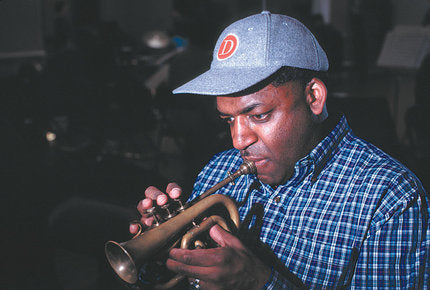\n\nOn his birthday today we miss our NYC jazz scene trumpeter/composer hero **Roy Campbell Jr.** I have witnessed his excellence on many, many occasions and his bright tone and world music-influenced free-jazz are greatly missed. He was most definitely one of the greats of progressive jazz trumpet, in lineage with Lee Morgan, Clifford Brown, Booker Little and Don Cherry.\n\nA native of the Big Apple, he started playing trumpet at 15 and studied with Morgan and Kenny Dorham. As a teen he played in big bands and as he turned 20 he aligned himself with the avant-garde with his group Spectrum. After some study with Yusef Lateef, he started a long association with Jemeel Moondoc & William Parker in Ensemble Muntu.\n\nHe co-founded some great ensembles: Other Dimensions In Music (w/ Daniel Carter, Parker, Rashied Bakr and sometimes Matthew Shipp), Pyramid Trio (w/ Parker & Hamid Drake) and the Nu Band. He has worked with Eddie Harris, Last Poets, Sun Ra, Don Cherry, Cecil Taylor, Sabir Mateen, Yo La Tengo, Charles Neville, Khan Jamal, Joe Maneri, El-P, Rob Brown, Peter Brotzmann, Mark Ribot and many more. He has also played with dancers, scored for film & stage and played funk & bop.\n\nHis original compositions were informed by not only the avant-garde but also Afro-Cuban, Caribbean, West African, Asian and Jamaican musics, as well as a lot of Don Cherry influence and his music could be highly politicized at times. He played trumpet, pocket trumpet, flugelhorn, flutes & recorder and violin. He has also done some acting work. It must also be noted that was a freak for horror flicks.",
"filePath": "content/posts/roy-campbell-jr-sept-29-1952-jan-9-2014.md",
"digest": "3bf24a8875caf93c",
"rendered": {
"html": "<p><img src=\"/images/200105_034_depth1_large.jpg\" alt=\"\"></p>\n<p>On his birthday today we miss our NYC jazz scene trumpeter/composer hero <strong>Roy Campbell Jr.</strong> I have witnessed his excellence on many, many occasions and his bright tone and world music-influenced free-jazz are greatly missed. He was most definitely one of the greats of progressive jazz trumpet, in lineage with Lee Morgan, Clifford Brown, Booker Little and Don Cherry.</p>\n<p>A native of the Big Apple, he started playing trumpet at 15 and studied with Morgan and Kenny Dorham. As a teen he played in big bands and as he turned 20 he aligned himself with the avant-garde with his group Spectrum. After some study with Yusef Lateef, he started a long association with Jemeel Moondoc & William Parker in Ensemble Muntu.</p>\n<p>He co-founded some great ensembles: Other Dimensions In Music (w/ Daniel Carter, Parker, Rashied Bakr and sometimes Matthew Shipp), Pyramid Trio (w/ Parker & Hamid Drake) and the Nu Band. He has worked with Eddie Harris, Last Poets, Sun Ra, Don Cherry, Cecil Taylor, Sabir Mateen, Yo La Tengo, Charles Neville, Khan Jamal, Joe Maneri, El-P, Rob Brown, Peter Brotzmann, Mark Ribot and many more. He has also played with dancers, scored for film & stage and played funk & bop.</p>\n<p>His original compositions were informed by not only the avant-garde but also Afro-Cuban, Caribbean, West African, Asian and Jamaican musics, as well as a lot of Don Cherry influence and his music could be highly politicized at times. He played trumpet, pocket trumpet, flugelhorn, flutes & recorder and violin. He has also done some acting work. It must also be noted that was a freak for horror flicks.</p>",
"metadata": {
"headings": [],
"localImagePaths": [],
"remoteImagePaths": [],
"frontmatter": {
"web-scraper-order": "1746562145-503",
"web-scraper-start-url": "https://peaceandrhythm.com",
"title": "Roy Campbell Jr / Sept 29, 1952 - Jan 9, 2014",
"pagination": "https://www.peaceandrhythm.com/?page=12",
"date": "September 29, 2017",
"post": "Roy Campbell Jr / Sept 29, 1952 - Jan 9, 2014",
"post-href": "https://www.peaceandrhythm.com/blogs/news/roy-campbell-jr-sept-29-1952-jan-9-2014",
"slug": "roy-campbell-jr-sept-29-1952-jan-9-2014"
},
"imagePaths": []
}
},
"collection": "blog"
},
{
"id": "tilahun-gessesse-sept-29-1940-april-19-2009",
"data": {
"title": "Tilahun Gèssèssè / Sept 29, 1940 - April 19, 2009",
"slug": "tilahun-gessesse-sept-29-1940-april-19-2009",
"date": "2017-09-29T00:00:00.000Z"
},
"body": "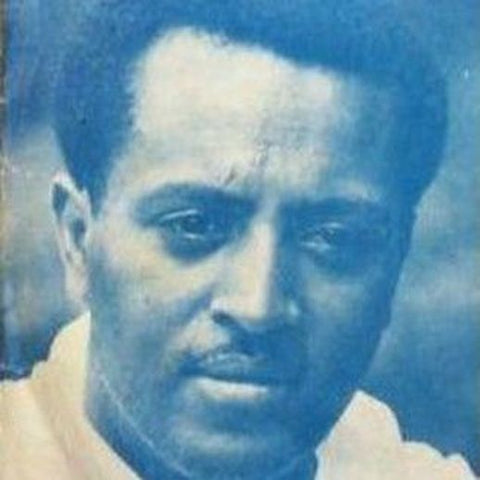\n\nBorn on this date in 1940, **Tilahun Gèssèssè** , one of the great Ethiopian singers of that \"Golden Age\", a time in the '60s and early '70s when things were a little more lax in the country in regards to producing records. \n\nBorn to an Oromo family, he dropped out of school and moved to Addis Ababa. He joined up with the Hager Fikir Theater and then became a star with the state-sponsored Imperial Bodyguard Band, perhaps the best opportunity for a singer's career at the time. \n\nIn 1960 he spent some time in jail, due to interpretation of one of his songs being considered less than patriotic. He became very popular as a singer and performed for Haile Selassie I on a few occasions. He recorded with Mulatu Astatqe and groups like The Walias Band and the music could be soulful, funky, folky, jazzy or experimental. \n\nAfter the junta in '74, many of his songs were banned. Known as \"The Voice\", he traveled the world promoting Ethiopian culture, sang in Amharic and Oromiffa and was an activist who raised money for charities in the '70s & '80s. He died from diabetes at 68 and his funeral was attended by over 500,000 people. That fantastic _Ethiopiques_ series has brought his catalog to the attention of fascinated music fans all over the globe.",
"filePath": "content/posts/tilahun-gessesse-sept-29-1940-april-19-2009.md",
"digest": "8c77c0b54540521d",
"rendered": {
"html": "<p><img src=\"/images/Tilahun_Gessesse_large.jpg\" alt=\"\"></p>\n<p>Born on this date in 1940, <strong>Tilahun Gèssèssè</strong> , one of the great Ethiopian singers of that “Golden Age”, a time in the ’60s and early ’70s when things were a little more lax in the country in regards to producing records.</p>\n<p>Born to an Oromo family, he dropped out of school and moved to Addis Ababa. He joined up with the Hager Fikir Theater and then became a star with the state-sponsored Imperial Bodyguard Band, perhaps the best opportunity for a singer’s career at the time.</p>\n<p>In 1960 he spent some time in jail, due to interpretation of one of his songs being considered less than patriotic. He became very popular as a singer and performed for Haile Selassie I on a few occasions. He recorded with Mulatu Astatqe and groups like The Walias Band and the music could be soulful, funky, folky, jazzy or experimental.</p>\n<p>After the junta in ‘74, many of his songs were banned. Known as “The Voice”, he traveled the world promoting Ethiopian culture, sang in Amharic and Oromiffa and was an activist who raised money for charities in the ’70s & ’80s. He died from diabetes at 68 and his funeral was attended by over 500,000 people. That fantastic <em>Ethiopiques</em> series has brought his catalog to the attention of fascinated music fans all over the globe.</p>",
"metadata": {
"headings": [],
"localImagePaths": [],
"remoteImagePaths": [],
"frontmatter": {
"web-scraper-order": "1746562142-502",
"web-scraper-start-url": "https://peaceandrhythm.com",
"title": "Tilahun Gèssèssè / Sept 29, 1940 - April 19, 2009",
"pagination": "https://www.peaceandrhythm.com/?page=12",
"date": "September 29, 2017",
"post": "Tilahun Gèssèssè / Sept 29, 1940 - April 19, 2009",
"post-href": "https://www.peaceandrhythm.com/blogs/news/tilahun-gessesse-sept-29-1940-april-19-2009",
"slug": "tilahun-gessesse-sept-29-1940-april-19-2009"
},
"imagePaths": []
}
},
"collection": "blog"
},
{
"id": "ben-e-king-sept-28-1938-april-30-2015",
"data": {
"title": "Ben E. King / Sept 28, 1938 - April 30, 2015",
"slug": "ben-e-king-sept-28-1938-april-30-2015",
"date": "2017-09-28T00:00:00.000Z"
},
"body": "**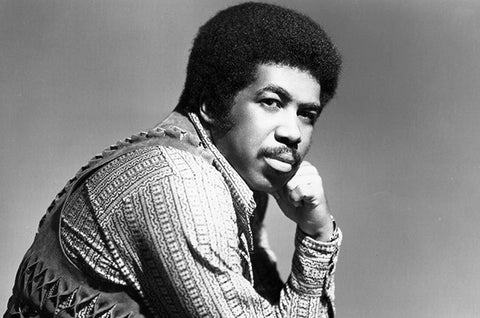**\n\n**Ben E. King** is one of the great baritone voices of the early soul music generation, with The Drifters and solo. Born in North Carolina, he grew up in Harlem and sang in church and in doo-wop groups. \n\nAfter working as a singing waiter he joined the Five Crowns in 1958, which became The Drifters (after the sacking of the Clyde McPhatter-led version). King sang on thirteen on their heavily-orchestrated gorgeous songs, including \"There Goes My Baby\" (which he co-wrote), \"Save The Last Dance For Me\" and \"This Magic Moment\". He rarely performed with them due to an ongoing contract dispute, being replaced by others for television and concert appearances. \n\nIn '60 he quit The Drifters to go solo, hitting big with \"Spanish Harlem\", \"Don't Play That Song (You Lied)\", \"I (Who Have Nothing)\" and especially \"Stand By Me\" (a song he co-wrote with Leiber & Stoller). His popularity declined a bit during the rock years but he kept up his career and had a #1 hit in '75 with the funk monster \"Supernatural Thing\". \n\nIn '79 he collaborated with Average White Band on the album _Benny & Us_. The massive success of the 1986 movie _Stand By Me_ drove the song to #1 that year. He re-cut the Monotones 1958 hit \"The Book of Love\" with Bo Diddley and Doug Lazy for the 1990 film _Book of Love_. He guested with Mark Knopfler, Heaven 17 and others and also made a well-received children's album in '98. In '99 he cut a jazz big-band album (_Shades of Blue_). He kept on touring right up until his death and his place as a legend of soul music is firm.",
"filePath": "content/posts/ben-e-king-sept-28-1938-april-30-2015.md",
"digest": "e0c48e49d9b90b03",
"rendered": {
"html": "<p><strong><img src=\"/images/ben-e-king-1970-billboard-650_large.jpg\" alt=\"\"></strong></p>\n<p><strong>Ben E. King</strong> is one of the great baritone voices of the early soul music generation, with The Drifters and solo. Born in North Carolina, he grew up in Harlem and sang in church and in doo-wop groups.</p>\n<p>After working as a singing waiter he joined the Five Crowns in 1958, which became The Drifters (after the sacking of the Clyde McPhatter-led version). King sang on thirteen on their heavily-orchestrated gorgeous songs, including “There Goes My Baby” (which he co-wrote), “Save The Last Dance For Me” and “This Magic Moment”. He rarely performed with them due to an ongoing contract dispute, being replaced by others for television and concert appearances.</p>\n<p>In ‘60 he quit The Drifters to go solo, hitting big with “Spanish Harlem”, “Don’t Play That Song (You Lied)”, “I (Who Have Nothing)” and especially “Stand By Me” (a song he co-wrote with Leiber & Stoller). His popularity declined a bit during the rock years but he kept up his career and had a #1 hit in ‘75 with the funk monster “Supernatural Thing”.</p>\n<p>In ‘79 he collaborated with Average White Band on the album <em>Benny & Us</em>. The massive success of the 1986 movie <em>Stand By Me</em> drove the song to #1 that year. He re-cut the Monotones 1958 hit “The Book of Love” with Bo Diddley and Doug Lazy for the 1990 film <em>Book of Love</em>. He guested with Mark Knopfler, Heaven 17 and others and also made a well-received children’s album in ‘98. In ‘99 he cut a jazz big-band album (<em>Shades of Blue</em>). He kept on touring right up until his death and his place as a legend of soul music is firm.</p>",
"metadata": {
"headings": [],
"localImagePaths": [],
"remoteImagePaths": [],
"frontmatter": {
"web-scraper-order": "1746562129-496",
"web-scraper-start-url": "https://peaceandrhythm.com",
"title": "Ben E. King / Sept 28, 1938 - April 30, 2015",
"pagination": "https://www.peaceandrhythm.com/?page=13",
"date": "September 28, 2017",
"post": "Ben E. King / Sept 28, 1938 - April 30, 2015",
"post-href": "https://www.peaceandrhythm.com/blogs/news/ben-e-king-sept-28-1938-april-30-2015",
"slug": "ben-e-king-sept-28-1938-april-30-2015"
},
"imagePaths": []
}
},
"collection": "blog"
},
{
"id": "john-gilmore-sept-28-1931-aug-20-1995",
"data": {
"title": "John Gilmore / Sept 28, 1931 - Aug 20, 1995",
"slug": "john-gilmore-sept-28-1931-aug-20-1995",
"date": "2017-09-28T00:00:00.000Z"
},
"body": "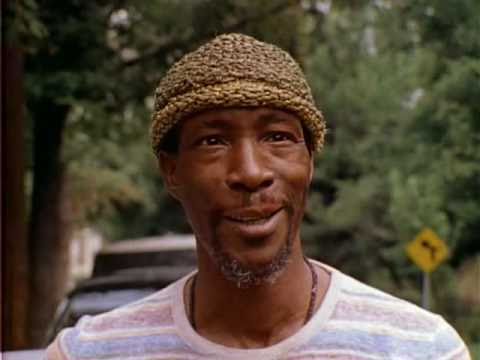\n\nHappy birthday to tenor saxophone hero **John Gilmore**. A long-time member of Sun Ra's Arkestra, a major influence on John Coltrane and an icon _Blowing Out Of Chicago_. \n\nGilmore started playing clarinet at 14 and tenor sax at 17 and he played with Earl Hines before joining Sun Ra's fledgling Arkestra in '53. He stayed with Ra for over forty years, recording on every single Arkestra record until '95 (including most of the legendary Ra-produced doo-wop sides). \n\nHe brought a gifted and harmonically advanced style and could play sweet to ferocious, but bop & blues was always his main language. Frustratingly, there are just a scant few appearances with any other bandleader. He did co-lead a hot hard-bop date for Blue Note with Clifford Jordan (that aforementioned _Blowin' In_ , with members of the Jazz Messengers) in '57. In '62 he appeared on _The Artistry of Freddie Hubbard_. In '63 he cut an album with Elmo Hope, recorded live at Riker's Island prison. \n\nThe mid-'60s saw him branching from Ra for a bit with work for Paul Bley (_Turning Point_ was released in '75 but recorded in '62 & '64), a couple of fantastic Andrew Hill albums in the mid-'60s, a mod-ish date with Art Blakey in '65 (and subsequent tour), some exploito-jazz on a _Batman_ -themed session with members of the Arkestra and The Blues Project in '66 (_The Sensational Guitars of Dan & Dale_) and records by Pete LaRoca, McCoy Tyner, Phil Upchurch and a fucking GREAT co-leader session in '70 with Jamaican-born trumpeter Dizzy Reese. \n\nIn '61 he gave some lessons to Coltrane (who was actually older than Gilmore by a few years) and Trane's advanced '61 live classic \"Chasin' The Trane\" was directly inspired by this association. He stayed with Sun Ra for so many years because Ra's music was the most advanced he had come across. In fact he led the Arkestra after Ra left the planet until Gilmore's own death in '95. He also functioned as the Arkestra's kit drummer at times.",
"filePath": "content/posts/john-gilmore-sept-28-1931-aug-20-1995.md",
"digest": "d849cf153e0ca866",
"rendered": {
"html": "<p><img src=\"/images/hqdefault_b1349ace-3cb6-407b-9cba-a42277ac19ed_large.jpg\" alt=\"\"></p>\n<p>Happy birthday to tenor saxophone hero <strong>John Gilmore</strong>. A long-time member of Sun Ra’s Arkestra, a major influence on John Coltrane and an icon <em>Blowing Out Of Chicago</em>.</p>\n<p>Gilmore started playing clarinet at 14 and tenor sax at 17 and he played with Earl Hines before joining Sun Ra’s fledgling Arkestra in ‘53. He stayed with Ra for over forty years, recording on every single Arkestra record until ‘95 (including most of the legendary Ra-produced doo-wop sides).</p>\n<p>He brought a gifted and harmonically advanced style and could play sweet to ferocious, but bop & blues was always his main language. Frustratingly, there are just a scant few appearances with any other bandleader. He did co-lead a hot hard-bop date for Blue Note with Clifford Jordan (that aforementioned <em>Blowin’ In</em> , with members of the Jazz Messengers) in ‘57. In ‘62 he appeared on <em>The Artistry of Freddie Hubbard</em>. In ‘63 he cut an album with Elmo Hope, recorded live at Riker’s Island prison.</p>\n<p>The mid-’60s saw him branching from Ra for a bit with work for Paul Bley (<em>Turning Point</em> was released in ‘75 but recorded in ‘62 & ‘64), a couple of fantastic Andrew Hill albums in the mid-’60s, a mod-ish date with Art Blakey in ‘65 (and subsequent tour), some exploito-jazz on a <em>Batman</em> -themed session with members of the Arkestra and The Blues Project in ‘66 (<em>The Sensational Guitars of Dan & Dale</em>) and records by Pete LaRoca, McCoy Tyner, Phil Upchurch and a fucking GREAT co-leader session in ‘70 with Jamaican-born trumpeter Dizzy Reese.</p>\n<p>In ‘61 he gave some lessons to Coltrane (who was actually older than Gilmore by a few years) and Trane’s advanced ‘61 live classic “Chasin’ The Trane” was directly inspired by this association. He stayed with Sun Ra for so many years because Ra’s music was the most advanced he had come across. In fact he led the Arkestra after Ra left the planet until Gilmore’s own death in ‘95. He also functioned as the Arkestra’s kit drummer at times.</p>",
"metadata": {
"headings": [],
"localImagePaths": [],
"remoteImagePaths": [],
"frontmatter": {
"web-scraper-order": "1746562140-501",
"web-scraper-start-url": "https://peaceandrhythm.com",
"title": "John Gilmore / Sept 28, 1931 - Aug 20, 1995",
"pagination": "https://www.peaceandrhythm.com/?page=12",
"date": "September 28, 2017",
"post": "John Gilmore / Sept 28, 1931 - Aug 20, 1995",
"post-href": "https://www.peaceandrhythm.com/blogs/news/john-gilmore-sept-28-1931-aug-20-1995",
"slug": "john-gilmore-sept-28-1931-aug-20-1995"
},
"imagePaths": []
}
},
"collection": "blog"
},
{
"id": "norris-jones-aka-sirone-sept-28-1940-oct-21-2009",
"data": {
"title": "Norris Jones aka Sirone / Sept 28, 1940 - Oct 21, 2009",
"slug": "norris-jones-aka-sirone-sept-28-1940-oct-21-2009",
"date": "2017-09-28T00:00:00.000Z"
},
"body": "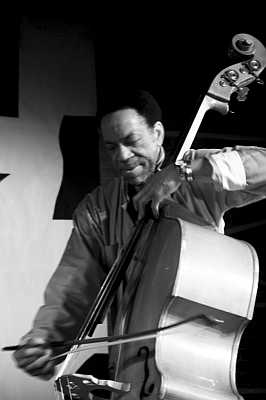\n\nBorn on this day was the great improvising bassist **Sirone** , who brought a highly intuitive, yet bluesy improvisational presence to the scene and contributing to several genre-defining classics of the '60s & '70s, not the least of which was his work with the collective Revolutionary Ensemble. \n\nFrom Atlanta, the former Norris Jones took up the trombone as a kid before moving to bass at 17. He started playing locally in the late '50s in a group with saxophonist George Adams. He was a sideman at sessions for Sam Cooke, Smokey Robinson and other R&B artists. \n\nIn '65 he moved to NYC and started immediately working with Dave Burrell. The late '60s found him playing with many of the most exciting artists in NYC--Sunny Murray, Albert Ayler, Archie Shepp, Sun Ra, Jackie McLean, Gato Barbieri, Marion Brown, Pharoah Sanders, Noah Howard. He was on Sonny Sharrock's raging _Black Woman_. \n\nIn '71 he started the awesome Revolutionary Ensemble, a violin/bass/percussion trio that combined free-jazz, avant-classical and various folk themes. The group lasted for much of the '70s and returned in 2004. The '70s also found him working with Andrew Cyrille, Jazz Composers Orchestra, Clifford Thornton, Roswell Rudd, Dewey Redman's great Impulse! albums and the AWESOME Cecil Taylor Unit. \n\nLiving in Berlin starting in the late '70s, he retained a presence in NYC and continued working non-stop, putting in time with folks like Billy Bang, Walt Dickerson, Charles Gayle, Ben Abarbanel-Wolff, Zusaan Kali-Fasteau, William Parker, Oluyemi Thomas and the underrated group Phalanx (with James \"Blood\" Ulmer, Rashied Ali and Adams). He also collaborated with theater ensembles and was a Buddhist.",
"filePath": "content/posts/norris-jones-aka-sirone-sept-28-1940-oct-21-2009.md",
"digest": "efd8cc5beaf5c52d",
"rendered": {
"html": "<p><img src=\"/images/8ab51b7854ed759234bbbf0fd9616544204bfd8c_large.jpg\" alt=\"\"></p>\n<p>Born on this day was the great improvising bassist <strong>Sirone</strong> , who brought a highly intuitive, yet bluesy improvisational presence to the scene and contributing to several genre-defining classics of the ’60s & ’70s, not the least of which was his work with the collective Revolutionary Ensemble.</p>\n<p>From Atlanta, the former Norris Jones took up the trombone as a kid before moving to bass at 17. He started playing locally in the late ’50s in a group with saxophonist George Adams. He was a sideman at sessions for Sam Cooke, Smokey Robinson and other R&B artists.</p>\n<p>In ‘65 he moved to NYC and started immediately working with Dave Burrell. The late ’60s found him playing with many of the most exciting artists in NYC—Sunny Murray, Albert Ayler, Archie Shepp, Sun Ra, Jackie McLean, Gato Barbieri, Marion Brown, Pharoah Sanders, Noah Howard. He was on Sonny Sharrock’s raging <em>Black Woman</em>.</p>\n<p>In ‘71 he started the awesome Revolutionary Ensemble, a violin/bass/percussion trio that combined free-jazz, avant-classical and various folk themes. The group lasted for much of the ’70s and returned in 2004. The ’70s also found him working with Andrew Cyrille, Jazz Composers Orchestra, Clifford Thornton, Roswell Rudd, Dewey Redman’s great Impulse! albums and the AWESOME Cecil Taylor Unit.</p>\n<p>Living in Berlin starting in the late ’70s, he retained a presence in NYC and continued working non-stop, putting in time with folks like Billy Bang, Walt Dickerson, Charles Gayle, Ben Abarbanel-Wolff, Zusaan Kali-Fasteau, William Parker, Oluyemi Thomas and the underrated group Phalanx (with James “Blood” Ulmer, Rashied Ali and Adams). He also collaborated with theater ensembles and was a Buddhist.</p>",
"metadata": {
"headings": [],
"localImagePaths": [],
"remoteImagePaths": [],
"frontmatter": {
"web-scraper-order": "1746562133-498",
"web-scraper-start-url": "https://peaceandrhythm.com",
"title": "Norris Jones aka Sirone / Sept 28, 1940 - Oct 21, 2009",
"pagination": "https://www.peaceandrhythm.com/?page=13",
"date": "September 28, 2017",
"post": "Norris Jones aka Sirone / Sept 28, 1940 - Oct 21, 2009",
"post-href": "https://www.peaceandrhythm.com/blogs/news/norris-jones-aka-sirone-sept-28-1940-oct-21-2009",
"slug": "norris-jones-aka-sirone-sept-28-1940-oct-21-2009"
},
"imagePaths": []
}
},
"collection": "blog"
}
]
León Brothers 45 Out Friday!! (Record Store Day)
November 20, 2017
** León Brothers “El Tigre” / “Candela” 45 RPM Peace & Rhythm P &R45-007 (2017) Some say the León Brothers are mystical musical entities that came from outer space and landed in the jungles of coastal Colombia 100 years ago, and with the aid of their magic keyboard time machine,...
Pete Cosey / Oct 9, 1943 - May 30, 2012
October 9, 2017
** Pete Cosey is a Chicago guitar legend, a heavy man with a heavy sound. He is best known for his mid-'70s work for Miles Davis. Despite having never recorded as a leader, he has gotten on many sessions and had a notable career as a Hendrix-esque sonic poet. He...
Yusef Lateef / Oct 9, 1920 - Dec 23, 2013
October 9, 2017
One of the (gentle) giants of American music, the career Brothe Yusef Lateef stretches way back to the '40s and he has played with many greats and inspired many others. The man played tenor sax, flute, oboe, basson, shenai, koto and many other obscure or Eastern instruments, as well as...
Larry Young / Oct 7, 1940 - March 30, 1978
October 7, 2017
One of the greatest of jazz Hammond organists, Larry Young (aka Khalid Yasin Abdul Aziz) played with Jimi Hendrix, Miles Davis, Elvin Jones, Grant Green, Santana, Booker Ervin and others in a career that played bop, soul-jazz, blues, psych-rock, avant-garde jazz, modal and funk-rock. The Lawrence of Newark was born...
Brother Bones / Oct 4, 1902 - June 14, 1974
October 4, 2017
If you ever wondered who that was whistling that tune for the Harlem Globetrotters basketball team theme song, well it's Freeman Davis aka Brother Bones , who was born today in 1902. A fairly obscure guy, he was from Montgomery AL and worked as a shoeshine boy before he recorded...
Leon Thomas / Oct 4, 1937 - May 8, 1999
October 4, 2017
One of the most unique vocalists of the jazz world, Brother Leon Thomas had an updated, yet ancient, style of scat-yodeling that was quite soulful and seemed to come from deep, not just from his inner being but also traveling folky songlines. He claimed to have discovered using that style...
Violeta Parra / Oct 4, 1917 - Feb 5, 1967
October 4, 2017
Here's a birthday honor to pioneering nueva-canción singer and folklorist from Chile, Violeta Parra aka "Violeta de Mayo". She was born into an educated family of poets, artists and singers, and she started playing and singing at 9. Her musician/farmer father died when she was 12, and the family started...
Eddie Cochran / Oct 3, 1938 - April 17, 1960
October 3, 2017
** Eddie Cochran , rockabilly icon of the '50s who perhaps set the template for the rebellious, tough rocker image, was born on this day in 1938. He was an innovative guitarist, a proto-punk influence and an early experimenter of overdubbing and multitracking. He remains one of the great heroes...
Von Freeman / Oct 3, 1923 - Aug 11, 2012
October 3, 2017
By comparison to some of his other fellow Chicagoan jazz brothers and sisters, the music of Von Freeman is fairly traditional sounding--that is to say blues, ballads, bossa, bop and a touch of soul-jazz, although his phrasing and mentoring was influential to a rising avant-garde in the city. He may...
Donny Hathaway / Oct 1, 1945 - Jan 13, 1979
October 1, 2017
Much respect to the well-loved Donny Hathaway , the great gospel-inspired singer and songwriter, as well as pianist, producer and arranger. His music covered soul, gospel, pop, blues, jazz, Christmas songs, ballads, funk and even Latin, in a nice mix of both originals and covers. Born in Chicago to a...
Mariska Veres / Oct 1, 1947 - Dec 2, 2006
October 1, 2017
One of my favorite '60s rock singers, Dutch gypsy vocalist Mariska Veres had a powerful presence as front woman for the arty psych band Shocking Blue, one of the great teenage rock bands of the era. Best known for their original version of "Venus" (covered thousands of times, literally, around...
Frankie Lymon / Sept 30, 1942 - Feb 27, 1968
September 30, 2017
Happy birthday to singer/songwriter/dancer Frankie Lymon , teenage superstar of the '50s. His tune "Why Do Fools Fall In Love", with his group The Teenagers, is still a perennial classic to this day. Born in Harlem, he sang gospel with his sister. He dropped out of school at 10 to...
Héctor Lavoe / Sept 30, 1946 - June 29, 1993
September 30, 2017
One of the greatest figures in salsa music, Puerto Rican sonero Héctor Juan Pérez Martínez was born on this day in 1946. Born in Ponce PR, Héctor Lavoe was childhood friends with Papo Lucca. He moved to NYC at 16, joined Willie Colón's revolutionary band and they proceeded to slay...
Marc Bolan / Sept 30, 1947 - Sept 16, 1977
September 30, 2017
Glam rock superstar Marc Bolan was born on this day. Born in London as Mark Feld to an Ashkenazi Jewish family, he grew up listening to the rock & roll boom. He started playing guitar at 9 and had a skiffle band as a teenager. As a young mod he...
Roy Campbell Jr / Sept 29, 1952 - Jan 9, 2014
September 29, 2017
On his birthday today we miss our NYC jazz scene trumpeter/composer hero Roy Campbell Jr. I have witnessed his excellence on many, many occasions and his bright tone and world music-influenced free-jazz are greatly missed. He was most definitely one of the greats of progressive jazz trumpet, in lineage with...
Tilahun Gèssèssè / Sept 29, 1940 - April 19, 2009
September 29, 2017
Born on this date in 1940, Tilahun Gèssèssè , one of the great Ethiopian singers of that "Golden Age", a time in the '60s and early '70s when things were a little more lax in the country in regards to producing records. Born to an Oromo family, he dropped out...
Ben E. King / Sept 28, 1938 - April 30, 2015
September 28, 2017
** Ben E. King is one of the great baritone voices of the early soul music generation, with The Drifters and solo. Born in North Carolina, he grew up in Harlem and sang in church and in doo-wop groups. After working as a singing waiter he joined the Five Crowns...
John Gilmore / Sept 28, 1931 - Aug 20, 1995
September 28, 2017
Happy birthday to tenor saxophone hero John Gilmore. A long-time member of Sun Ra's Arkestra, a major influence on John Coltrane and an icon Blowing Out Of Chicago. Gilmore started playing clarinet at 14 and tenor sax at 17 and he played with Earl Hines before joining Sun Ra's fledgling...
Norris Jones aka Sirone / Sept 28, 1940 - Oct 21, 2009
September 28, 2017
Born on this day was the great improvising bassist Sirone , who brought a highly intuitive, yet bluesy improvisational presence to the scene and contributing to several genre-defining classics of the '60s & '70s, not the least of which was his work with the collective Revolutionary Ensemble. From Atlanta, the...
